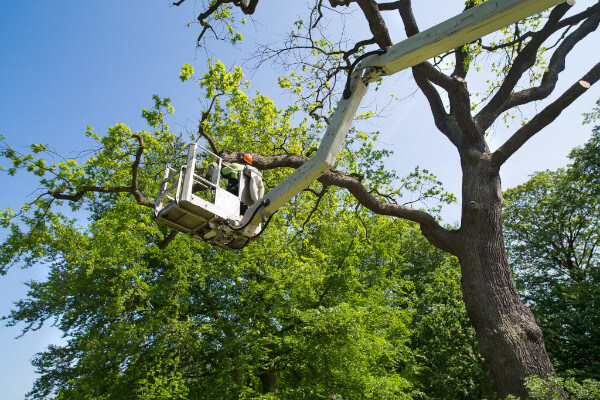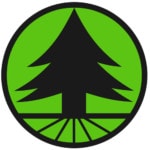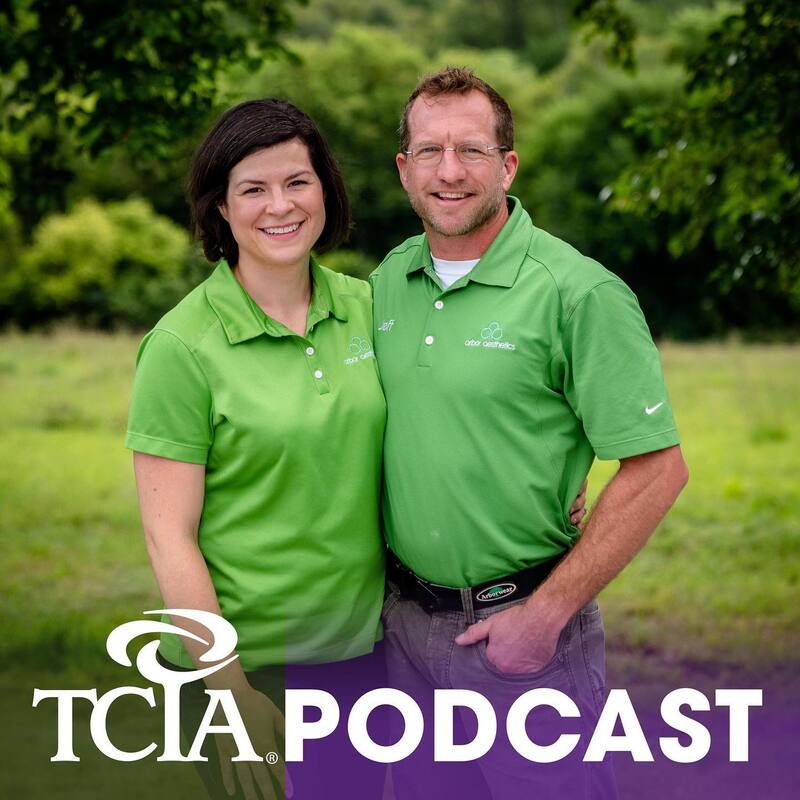WHAT TO LOOK FOR IN HIRING A TREE TRIMMER
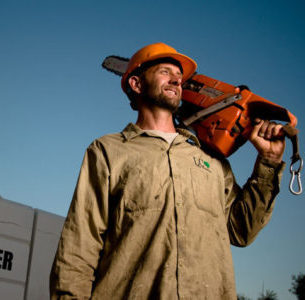


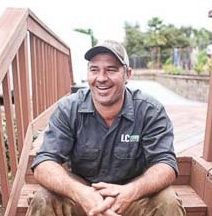

People need the help of a tree service company for a variety of reasons, from a single tree on a residential property that needs a trim, to dozens of trees that need to be removed for a large construction project. Sometimes, you may also have a sick or infested tree that needs treatment, or you may also just require an arborist consultation or arborist report. Whatever the reason, it is important to choose wisely. Trimming and removing trees is extremely dangerous work. Unfortunately, trees get butchered and accidents happen. Trees can sometimes be unpredictable, and not to mention, tree trimmers are working on these towering limbs and trunks with running chainsaws! So what should you look for when hiring a tree service company for your property?
REPUTATION
Is the tree service company that you are considering hiring a reputable one? Do they have good reviews on third-party websites, like Yelp or Google? Yes, this may be biased towards new companies that haven’t had the time to build their online presence, since all companies, including ours, had to start with nothing to show. But when the market is saturated with so many tree care companies to choose from, it’s wise to choose one whose work many people have been pleased with, rather than one that doesn’t possess much of a reputation, so you really don’t know what outcome you’ll be receiving.
It is good to look for reviews outside of a company’s website since they tend to be more trustworthy. Sadly, not all reviews on a company’s website can be trusted as legitimate. We know this first hand because, on more than one occasion, other tree service companies have copied our website content onto their site, including our customer reviews. So, to make a long story short, look to verifiable reviews when you are trying to determine what company to use.
INSURANCE
Choosing a tree service company that is fully insured is one of the most important features that you must consider.
Fact 1. Trimming and removing trees is undeniably dangerous work.
Fact 2. Accidents happen.
If the tree service industry is so precarious, you would think that ALL tree companies would naturally have insurance. But lo and behold, many companies do not! “Why wouldn’t they?” you may wonder. Well, due to the dangers of the industry, insurance rates are extremely high. Some tree business owners simply do not want that high of an expense because if they did have insurance, it would cut drastically into their profits. Therefore, it isn’t always the best idea to settle with the lowest bidder, especially if there is a huge difference between bids.
Here is an example scenario. You need a tree removed, so you collect bids from three different tree care companies.
Company #1 quotes $3,000.
Company #2 quotes $3,500.
Company #3 quotes $1,200.
As you can see, the $1,200 quote that you received from Company #3 is drastically lower than the other companies. Too drastic of a difference! Yes, from a financial standpoint, it is the most appealing. But there is a hidden reason why they can afford to charge so little. It could be that they pay their employees “under the table,” so they don’t have the payroll taxes and all the other expenses that go hand-in-hand with payroll. It could be that they are inexperienced and unknowingly underbid the project — which will not result in a good outcome for them, but also for the customer. We’ll touch on that later in this article. It could also be that they are not insured, so consequently, they do not have the expenses that the other companies have to consider when drafting your quote. It could also be a combination of all the above mentioned. That is just a bad recipe for additional disaster if disaster were ever to hit!
What type of “disasters” could happen on a tree project? The most common mishap would be property damage. Sometimes, even with the most experienced and skilled companies, limbs fall in an unexpected direction, damaging whatever is situated below, such as fences, roofs, sprinklers, landscape, and hardscape. In the worst-case scenarios, a person can get injured or even fatally injured. If anyone is injured on your property, then you, as the property owner, could be held liable IF the injured worker was not covered by insurance. So, please ensure that any tree worker you contract to work on your property is properly insured as a safety precaution for everyone.
LICENSED
Ensure that you hire a tree service company with a license. We’re not just talking about a business license (which they should have also), but a contractor’s license with the state. When you hire a licensed tree company, you are hiring a company that cares to do things right. Would you want to hire a company that doesn’t care to conduct business legally? What does that say about the business owner’s ethics? Many people are not aware that when a business owner applies for a contractor’s license, they are required to be fingerprinted in order for a criminal background check to be conducted. This should give you, as the hiring party, some sense of assurance.
Of course, that’s not to say that all licensed contractors conduct business ethically or that unlicensed contractors all conduct business unethically. Many unlicensed contractors have good intentions to provide great service at the lowest possible price. But unfortunately, there is a lack of accountability. And, it is not unheard of for a contractor to unexpectedly disappear from a partially-completed job — usually because the project was underbid, and it ended up being more difficult or taking much longer than expected to complete. Then, the customer is left with an incomplete job and no contractor left to finish it.
Unlicensed tree trimmers also lack complete insurance. They may possess general business insurance, but in order to qualify for general liability insurance (which is what helps you and the company if property damage is incurred), workman’s compensation, and bonding, you must possess a contractor’s license. All of these precautionary expenses that tree care companies incur are hefty, hefty, hefty! So an unlicensed tree contractor who doesn’t need to deal with them has a huge cost advantage that enables him to provide the lowest bid compared to their licensed and insured counterparts.
AFFILIATIONS
If you have already done some shopping around for a tree service company to work with, you may have noticed that many companies list out organizations that they are registered with. You may have even recognized the same organization logos on different arborists’ websites and/or recognized similar organization initials, such as ISA and TCIA.
ABC…123…what do all these mean? And why should you care?
Hiring a tree care company that has industry affiliations is important because it demonstrates that the company:
- cares to grow in their field, as these organizations provide yearlong resources for learning.
- has a desire to network with other companies, which can help increase their accountability and reputation.
- cares about increasing their knowledge of business operations. This is vital because a business owner who cares about business operations cares about providing great customer service.
The most recognized national arborist organizations are ISA (International Society of Arboriculture) and TCIA (Tree Care Industry Association). A company may also have affiliations with groups outside of the tree industry but pertain to associated industries — such as property management groups, construction and builders groups, and business networking groups. Recognizable companies in San Diego, as well as nationwide, include BOMA (Building Owners and Manager Association) and BIA (Building Industry Association). Why would those non-arborists groups matter? Because if a tree service company has large property management companies and builders on their clientele list, then chances are that they deliver impressive outcomes and possess strong customer service that these companies continue using them.

CREDENTIALS
Now that you’re more familiar with industry affiliations, let’s move on to credentials. ISA, which is the leading arborist organization in the nation, is the same group that grants the credential of Certified Arborist. In researching tree care companies, you may have seen some promoting the title of Certified Arborist — or better yet, ISA Certfied Arborist.
Certified Arborist. ISA Certified Arborist. Is there a difference? No, they’re the same certification because ISA is the only organization in the nation that grants them. So a Certified Arborist is technically also an ISA Certified Arborist.
Hiring a Certified Arborist is different than hiring just any arborist, which is the title given to anyone whose work involves trimming and removing trees, and/or tree health care. Anyone can learn to trim trees through job experience, on-site training, and even through YouTube. But having the credential of being a Certified Arborist means the individual is trained and knowledgeable in all aspects of arboriculture. In order to be granted the title, an applicant must have a minimum of three years of full-time work in the tree industry. A formal exam must also be passed that covers the ins and outs of trees, including topics such as soil management, tree biology, safe work practices, and more.
KNOWLEDGE
Does the tree care company you are considering hiring for your project seem to be knowledgeable about their field? Not everyone in the arboricultural industry actually understands the science involved with trees. This is important because if you’re seeking to have a tree trimmed, for example, it’s important for an arborist to understand the impact that pruning has on trees. How much is a safe amount to prune off? How will trimming certain areas affect the tree’s future growth projection? What season is best or harmful for certain species? For example, if you find a tree trimmer who is open to trimming your pine tree in the summer — keep shopping! That person receives an F in Tree Biology 101! Pine trees should never be trimmed in the summer, and any arborist who knows trees would know that bit of rudimentary information.
Hiring a tree care company that also specializes in tree health care is a feature that is beneficial because:
- You may unknowingly have a tree infested with pests or infected with a disease that the company’s estimator may notice during your estimate.
- Early detection of an infestation or infection is key to saving your tree.
- Tree Health Care Specialists can easily detect signs of common pests and diseases in the area, so the proper diagnosis and treatment can be given.
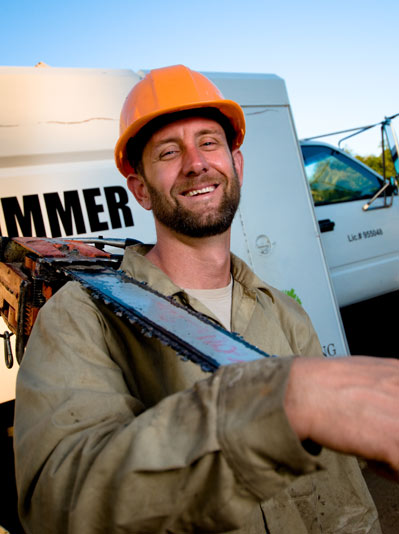
PROFESSIONALISM
Another important feature to look for in hiring a tree service contractor is the company’s professionalism. Do they present themselves professionally — as an actual business or more of a side gig or one-man show? You could say that this would be a valid “judge a book by its cover” scenario because how a company presents itself speaks volumes on how behind-the-scenes operations are handled. Some tree trimmers that you meet with for a quote may come across as gruff and/or dirty. Not so much of a surprise. It is a tough and messy job. And it doesn’t mean that just because the person you are meeting looks that way, they will do a poor job. Even LC Tree Service started off as a small, one-man show, but Founder, Larry Coalson — even as dirty as he was during estimates — still was able to provide outstanding work for his first set of customers.
If your tree estimator appears as though he just came from a job, it’s because he did. And not only did he already cut down some limbs and trees that day, but he also had to answer phone calls, return phone calls, reply to emails, draft invoices, dump the truck to prepare for the next day’s job, and maybe even do some equipment maintenance. As you can clearly see, this person is busy — not to mention tired — as working in the sun and carrying heavy loads for hours a day takes a toll on just about anyone. So when one person is handling the entire process or at least 90% of it, then it shouldn’t be a surprise when phone calls take a while to return or jobs take an extended amount of time to complete. While all companies could have the occasional slip-up in returning a call or email in a timely manner or take longer than expected to complete a project, companies that employ a team of field workers and administrative staff tend to be more efficient in their performance and customer service since they have more people to help carry the load.
CUSTOMER SERVICE
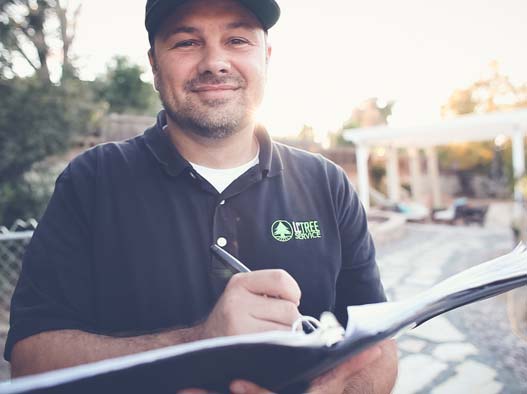 Going hand-in-hand with gauging a company’s professionalism, their customer service is still another factor to consider when you start contacting and meeting with different tree care companies.
Going hand-in-hand with gauging a company’s professionalism, their customer service is still another factor to consider when you start contacting and meeting with different tree care companies.
- Were your phone calls and/or emails responded to in a timely manner?
- Were they friendly on the phone or via email?
- Was the estimator friendly and make you feel like you would be taken care of?
- Did you feel like your desires concerning the project and opinion were heard?
After you decide to book your project with a company, the service you receive prior to booking can be reflective of the service you would receive during the job and afterward.
LET’S SUMMARIZE
CHOOSE A TREE SERVICE COMPANY THAT:

NEED ASSISTANCE WITH YOUR TREES OR PROPERTY?
LC TREE SERVICE WOULD BE HAPPY TO HELP!
619.677.5777
The post WHAT TO LOOK FOR IN HIRING A TREE TRIMMER first appeared on San Diego Tree Trimmers – LC Tree Service.
Best of Omaha 2022 – Omaha’s Best Tree Service
🌳 Meaningful growth for people and trees. 🌳
Did you miss our previous article…
https://www.treesforeducation.com/?p=239
HOW TO WATER YOUR TREES PROPERLY

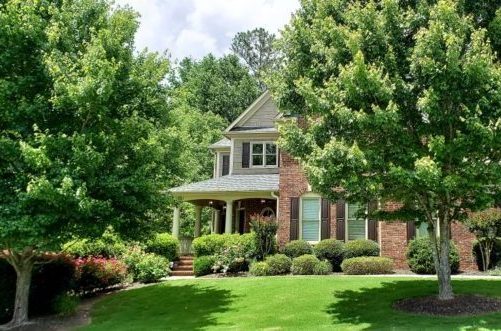
When it comes to watering your tree properly, it can be a bit tricky — as trees can suffer if you water too little or even if you water too much. So how can you tell if your tree is suffering from a lack or an excess of water? Unfortunately, signs of underwatering and overwatering your trees can be similar when it comes to the canopy and foliage, but do not stress because fortunately, there is a simple way to figure out which issue you have. The ground! Is it constantly damp or is it dry? Plain and simple.
UNDERWATERED TREE SYMPTOMS
- thinning canopy
- browning or yellowing of foliage (off-season fall colors)
- wilted or curling leaves
- untimely leaf drop
- dead branches
- small leaves
- slow growth
- pest infestation
Drought or underwatered trees are fairly easy to detect. For one, they don’t look healthy. The most obvious feature is that their canopy will be sparse, and their leaves will look an untimely fall color with wilting or curling. Then if you notice pests, it is definitely time to change your watering protocol and give your tree a nutrient boost through our Tree Health Care system.
When the tree’s drip zone (ground underneath the canopy) is devoid of water, the fine roots, which play an important role in water and nutrient absorption, begin to die back, thus affecting the health of the tree and displaying itself in the canopy and foliage. Eventually, if the tree continues to suffer from underwater stress, then the large, anchoring roots will dry up and die off as well. That’s when large trees become dangerous, as they become a likely candidate for tree failure.
OVERWATERED TREE SYMPTOMS
- frequent wet ground around the tree
- brittle leaves
- brown edges
- gray or black spotting on the leaves
- wilted or curling leaves
- yellowing or light green foliage
- untimely leaf drop
When a tree is receiving an excessive amount of water, the tree suffocates. Trees aide the planet with their ability to absorb carbon dioxide from the air and release fresh oxygen. But surprise, surprise — trees need oxygen too! The fine roots are also responsible for absorbing oxygen from tiny air pockets in the soil. If the tree is receiving too much water, water fills the air pockets, making it hard for the tree to breathe. The roots then produce methane, hydrogen, and nitrogen gases that choke out the roots, preventing them from performing their important duties for the tree.
HOW TO PROPERLY WATER YOUR TREE
HOW MUCH WATER FOR YOUR TREE
There’s a general rule of thumb for the amount of water to provide for your trees that may come as a shocker for most people — 10 gallons of water for every inch of trunk diameter! So if you do the math, a young tree with a skinny 2-inch trunk diameter that you just purchased from the nursery in a 5-gallon container needs 20 gallons of water according to that theory! Overkill? Possibly — although some arborists may argue otherwise. However, from our experience in the industry, as well as caring for our own personal trees, a newly-planted young tree does not need that hefty amount of water. So our verdict is…save your water!
As mentioned prior, you can learn how much water your tree needs by a simple screwdriver test. A majority of a tree’s roots sit in the top 12 inches of the ground, especially in urban settings where soil compaction and development can hinder deep root growth. When watering your tree, deep watering is the goal. And slow watering is the most efficient way to reach that goal. So provide enough water for your tree until your screwdriver, if you’re doing a screwdriver test, can easily be pushed all the way down. Then water a bit more, and then your tree will be a happy tree.
RECOMMENDED METHODS TO WATER YOUR TREE
Hose. Since trees require so much water, standing there with your hose will be extremely time-consuming. In addition, watering with the hose on high pressure will shower the tree with more water than the soil can absorb, which will result in wasted water run-off. A more efficient method in using a hose is to turn it on as low as possible so water is slowly dribbling out. After 20-30 minutes, move it to a new location under the canopy. Keep repeating until the tree’s drip zone has been sufficiently watered. Depending on the size of the tree, this may take 1-2 hours — so make sure to set your timer.
Soaker Hose. An easier and efficient method is using a soaker hose that is placed under the tree’s canopy. Soaker hoses are porous and allow water to slowly seep out. This gradual release of water minimizes wasted water and maximizes water absorption. The soaker hose should be placed in a circular pattern under the canopy of the tree and turned on for an hour or more. The goal is for the water to penetrate eight inches into the ground, which can easily be determined using the screwdriver test. Push an 8-inch screwdriver into the ground. If it pushes easily all the way, the ground is moist. Easy does it!
Dripline. The easiest method to watering your tree is using a drip irrigation system. However, it is also one of the most difficult to install. But once installation is complete, the rest is a no-brainer. Just like with a soaker hose, the dripline should be set in a circle under the canopy and run for an hour or more, contingent on factors such as the tree’s size, species, and climate.
Sprinkler. Sprinklers are another common system for watering landscape. Like the drip system, installation can be time-consuming and difficult, but once completed, the work is automatically performed for you and can be adjusted according to the tree and the season. Sprinklers are great for watering lawns and any area of land that is mostly covered with landscaping, however when they are used to water trees that are not heavily surrounded by other plants, then weeds will become an issue.
Bucket. If you need an easy method to water your tree that doesn’t require much time and doesn’t require the purchase of any additional “fancy” tools, you can always use the good ol’ 5-gallon bucket that is hanging out in your garage. Drill holes on the bottom portion of the bucket and place it in the tree’s drip zone. Fill the bucket with water and let it empty out. Then move the bucket to a new location, and repeat the previous step until the tree has received a sufficient amount of water.
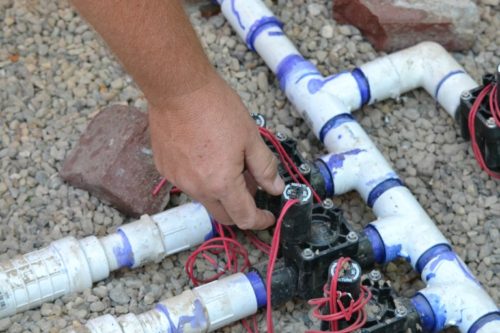

HOW OFTEN DOES YOUR TREE NEED TO BE WATERED?
Newly planted trees will require more water during the first 1-2 years. Their root structure is limited to a smaller area, and it needs to expand in order for the tree to thrive. However, when a tree is freshly transplanted, it undergoes a period of shock — which is why you may see leaf drop or signs of deterioration. Have no fear though. With proper care and patience, your tree will bounce back.
During the first two weeks after being planted, new trees need to be watered at least three times a week over the root ball, or even daily in dry, hot weather. Then, for the next ten weeks, this can be reduced to 1-3 times a week. For the rest of that first year up until the fifth year, the tree will need to be watered twice a month, or even weekly during times of heat or drought. For the first two years, water needs to be concentrated over the root ball. After that, the watering zone can be expanded to accommodate the growing root system.
YEAR ONE
Weeks 1+2
Weeks 3 -12
Rest of 1st Year
Water 3-7 times a week over the root ball.
Water 1-3 times a week depending on the weather over the root ball.
Water 2 times a month over the root ball.
YEAR TWO
Hotter Months
Colder Months
Water weekly or bi-weekly over the root ball.
Provide supplemental water when necessary.
YEAR THREE
Hotter Months
Colder Months
Water weekly or bi-weely to an area twice the width of the root ball.
Provide supplemental water when necessary.
Once a tree is established and mature, they will have such extensive roots that they are able to tap into deeper groundwater or may even creep into your neighbor’s property to take advantage of their water system. However, if it has not rained in at least a month, then supplemental water will still need to be provided. Remember that a water-deprived tree is weaker and susceptible to pests and disease, so keeping it as healthy as possible is key to its longevity.
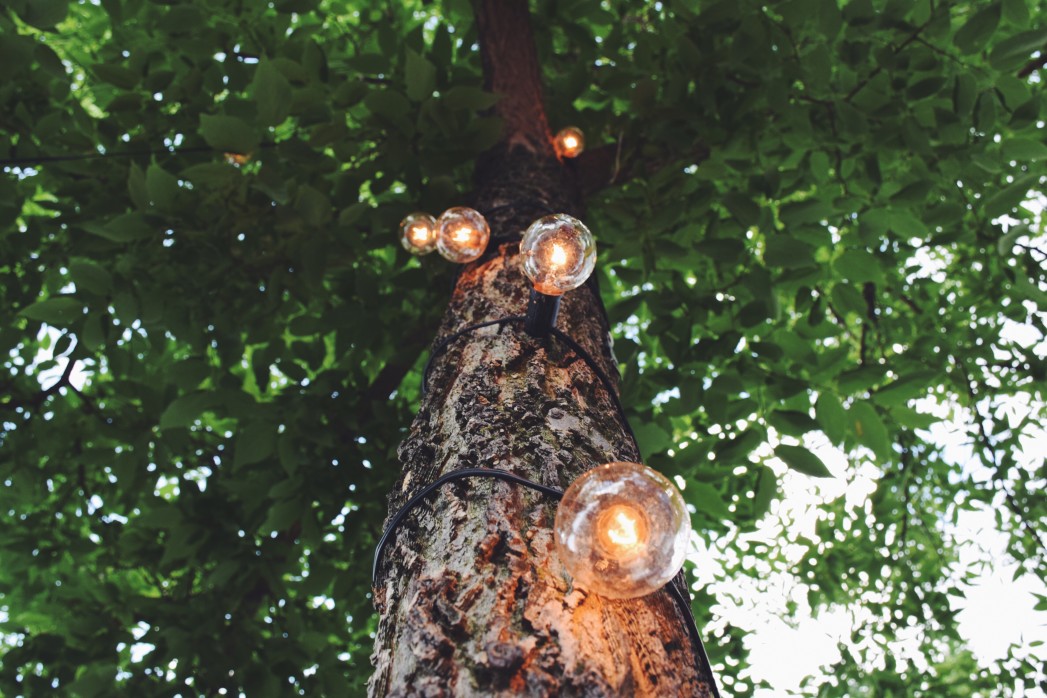
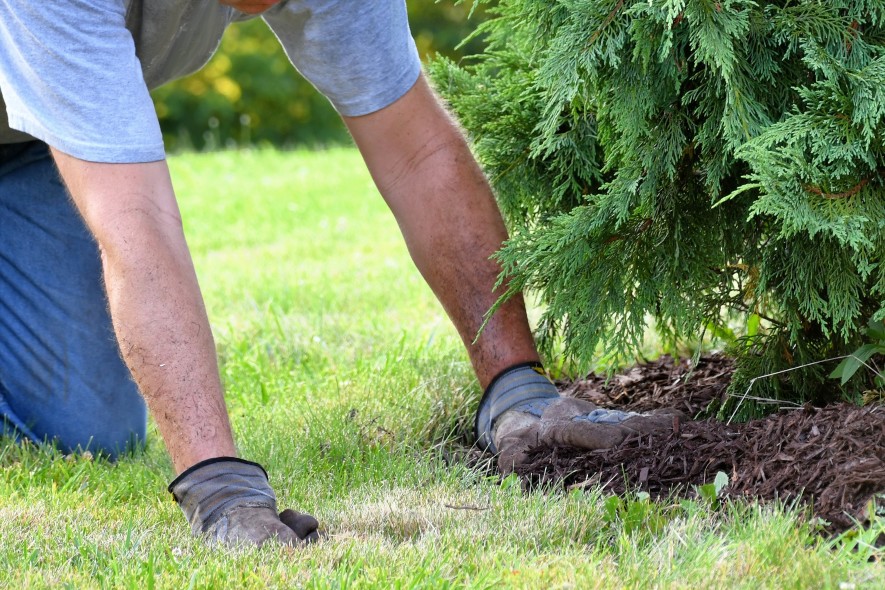
OTHER MEASURES TO HELP YOUR TREE
MULCH
Adding mulch as groundcover for your trees has many benefits that should not be overlooked. For starters, adding mulch helps prevent soil compaction by buffering the impact of water that can result from watering with a hose or from hard rain. Remember, trees get oxygen from tiny air pockets in the soil, so its important to keep the soil from getting too compacted. Mulch also acts like a layer of protection by helping to stabilize the ground temperature during extreme weather. During the hotter summer months, the ground will be slightly cooler, which results in less water evaporation and more comfortable roots. Happy roots, happy tree.
When applying mulch, it is important not to be too excessive. Trees only need 2-3 inches of mulch. Anything more will be asking for an array of problems, such as suffocation of the tree’s roots, wasted water, and a higher susceptibility to rodent pests and diseases. Therefore, avoid creating a mulch volcano. As the name implies, do not place down so much mulch that it ends up looking like a volcano around your tree.
CAMBISTAT
Cambistat is a plant health care additive developed by Rainbow Treecare Scientific Advancements that is quickly growing in popularity in the landscape and arboricultural industries. Cambistat was created primarily as a growth regulator, but it has several side results that are so beneficial for trees that people across the nation are raving about this product. Since the tree shifts its focus from above-ground growth, its energy is applied more towards underground growth with the roots, more specifically fine roots, which are primarily responsible for water, nutrient, and oxygen absorption. The end result is an overall healthier tree with greener foliage, increased resistance to disease, and increased resistance to heat and drought.
Even though Cambistat is a growth regulator, any size tree, big or small, would benefit from it. Many people use Cambistat to help control the size of their mature trees, but why would anyone use it on a young tree? Aren’t people anxious for a teeny, weeny, baby tree to grow to a large, lush adult tree? Yes, but remember that new transplants don’t grow much anyways the first two years after being planted so they could focus on root growth. Therefore, adding Cambistat during this period would be great timing so it could expedite the root growth process.
The effects of Cambistat can last for up to three years. After that time, you can choose to have it reapplied or skip reapplications so that a young tree can now refocus on trunk and limb growth. Either way, the tree will now have a stronger root system that is well set up for water absorption.
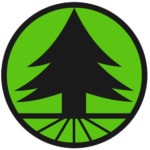
LOOKING FOR A TREE SERVICE COMPANY?
CONTACT LC TREE SERVICE TODAY FOR YOUR FREE ESTIMATE.

The post HOW TO WATER YOUR TREES PROPERLY first appeared on San Diego Tree Trimmers – LC Tree Service.
HELPING TREES IN THE SUMMER HEAT

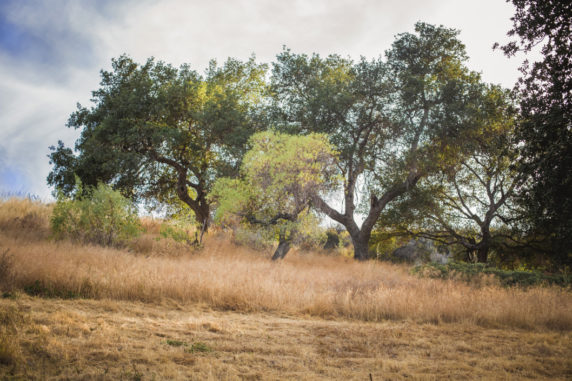
When the summer arrives in San Diego, some trees and plants may fare well, but others, unfortunately, succumb to the summer heat. While coastal San Diego communities have little to worry about with heat-related tree “fatalities,” inland neighborhoods such as El Cajon and Santee, typically have about four months of high temperatures in the 80’s, 90’s, and 100’s. Many people can shelter indoors to enjoy the cool AC or take a dip in the pool or beach — but what about the trees?
Trees and plants suffer in high temperatures for two short and simple main reasons:
- lack of water
- small root system
Which trees are most vulnerable in the summer?
NEW TRANSPLANTS. Trees that have just been planted into the ground have a smaller root system that is limited to the size of the container they came in. When you first plant a tree, you may notice…well nothing. No growth. Nothing during the first year. And nothing much in the second year. Nada! That is because the growing action is occurring underground with the roots. In order for the new tree to survive and thrive, its roots will need expand well beyond its current space. Roots are opportunistic and will grow where the nutrients and water are available. Please see the following section on how to properly water new trees.
POTTED TREES. The roots of these trees have the unfortunate disadvantage of not being able to travel past its borders. They’re stuck! So potted trees need extra love and care in the summer heat. Depending on the species, some trees need to be watered daily — sometimes even twice a day when the heat gets extreme. A general rule of thumb is to water when the first inch of soil is dry in the pot.
SICK OR INFESTED TREES. When a tree is inflicted with disease or pests, then high temperatures will just be added stress to an already struggling organism. Therefore, it’s important to make attempts to manage any tree infestation or infection before the summer heat arrives. If you suspect that your tree may be suffering from disease or pests, please contact LC Tree Service for information on our Tree Health Care treatments, so we can help you get your trees healthy again.
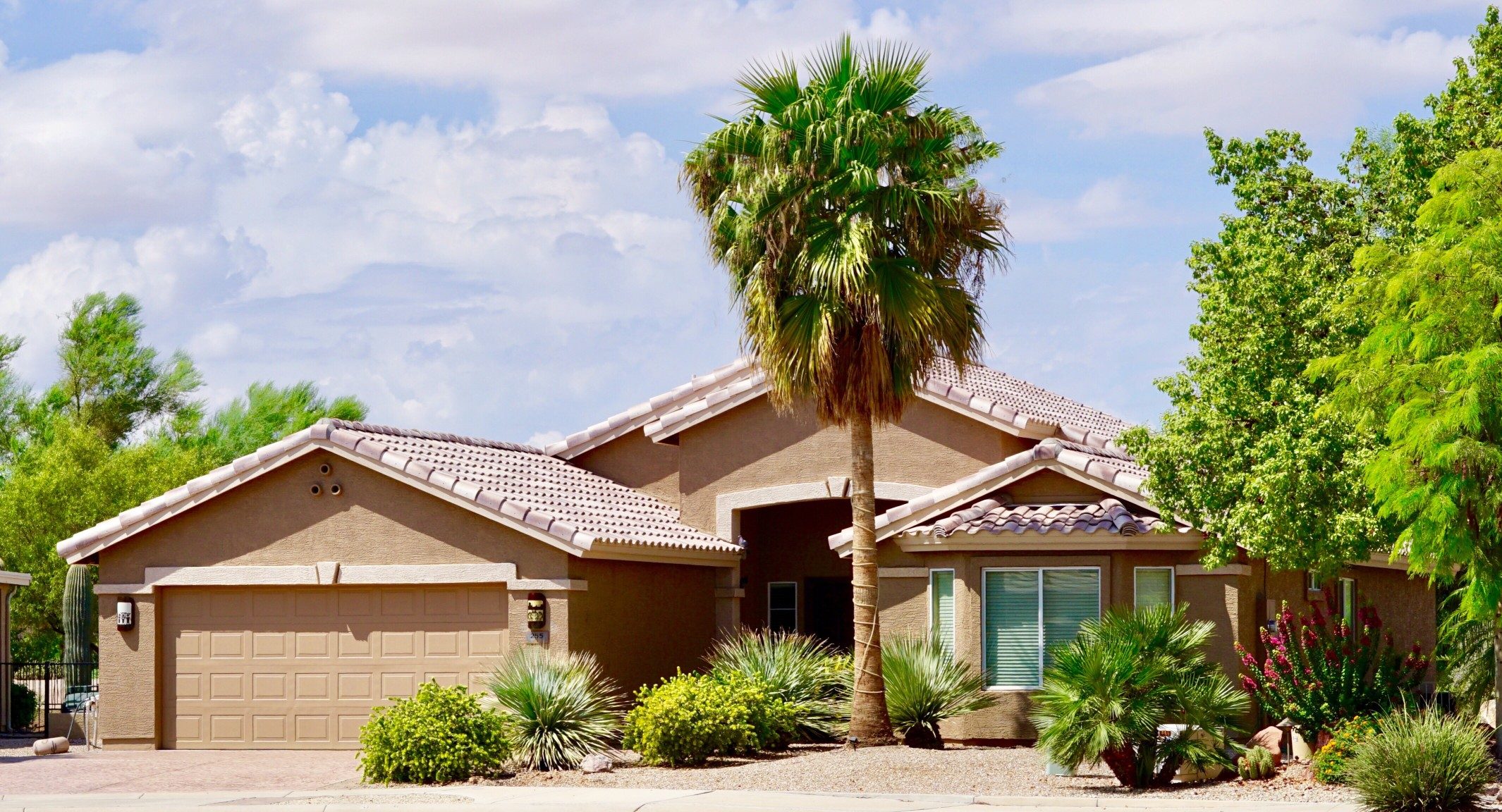
How can you help your trees in the heat?
PLANTING SEASON. First of all, if you are planting new trees onto your property, avoid doing so in the summer. The fall and the spring are the best times of the year to add any new additions to your landscape since they have less extreme temperatures. The ground also tends to be moister in the spring, thus aiding in root expansion. Remember, that roots will go where the nutrients and water supply are, so if a large expansion of the ground around the tree is damp, the roots will have an easier time growing outward.
WATER APPROPRIATELY. Make sure to provide plenty of water for your trees in high temperatures, especially new trees. You need to make sure that the roots do not dry out. The best time to water is in the morning to give the roots more time to soak up the water. As for the amount of water, there is a popular general rule-of-thumb among arborists of providing one gallon for every inch in trunk diameter in the tree’s drip zone. If you do the math, a 2-inch diameter tree will need 20 gallons of water. Yes, that’s a lot of water! At medium pressure, a hose will spray out roughly 10 gallons of water every five minutes. Therefore, to adequately water this tree, it would take 10 minutes! However, we have seen trees thrive without this amount of watering, and we recommend that you gauge how your tree is doing. If your tree appears to be suffering, then water more. But if it is green and healthy, then maintain your current watering amount and schedule. To keep it simple without having to do any trunk measurements and calculations — water deep. This is why slower is better. Rather than watering with a hose, we recommend setting up a drip line or soaker hose under the tree’s drip zone, which is the area under the tree’s canopy. This efficiently maximizes the amount of water that is soaked into the ground and made available for the roots. An excessive shower of water from a hose could just result in wasted runoff. Plus, who wants to hold a hose for an hour to water all of their trees?
Newly-planted trees should be watered daily for the first two weeks after being planted. Then 1-2 times a week for the next 10 weeks. It can take 2-3 growing seasons for a tree’s roots to expand outside of its “comfort zone,” so until then keep the water in fairly close proximity to the tree since the roots are clustered around its root ball. Mature trees only need to be watered twice a month, possibly more during extreme heat.
MULCH. Spreading mulch around trees can be very beneficial, especially for young trees. When a tree is well-mulched, the soil around the tree is slightly cooler in the summer. And since direct sunlight on the soil is prevented with a mulch cover, water retention is improved. When applying, overmulching is possible. A tree only needs about 2-3 inches of mulch. Anything more would absorb too much of the water that is meant for the tree and it could also choke the tree’s roots. However, a proper amount of mulch has many benefits including improving root growth, moderating soil temperature in the heat (as well as in the cold), increasing nutrient levels, and preventing soil compaction.
CAMBISTAT. Arborists nationwide have a brilliant trick up their sleeves. Its name — Cambistat. Primarily used as a growth regulator for mature trees and other plants, Cambistat can reduce tree growth by up to 70% over a 3-year timespan. It works by inhibiting the tree’s growth hormone called gibberellin. By doing so, the tree is able to focus its energy on other aspects, such as fine root growth, which aide the tree in water and nutrient absorption. Other effects include greener foliage, increased disease resistance, and greater heat and drought tolerance. While it seems counterintuitive to use a growth regulator on a young tree, as mentioned before, new transplants don’t grow much above ground anyways in the first couple of years so they can focus on root growth. So having Cambistat applied would only supercharge the much-needed root expansion.
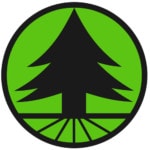
NEED HELP WITH YOUR TREES?
CONTACT LC TREE SERVICE TODAY FOR YOUR FREE ESTIMATE.
The post HELPING TREES IN THE SUMMER HEAT first appeared on San Diego Tree Trimmers – LC Tree Service.
SOARING HEIGHTS WITH TREE TRIMMERS
Ever wonder what it feels like to be a professional tree trimmer? To be up a 100-ft palm swaying with the wind? Yikes! Or to sit atop a tree overlooking the neighborhood? To the adrenaline junkie or someone who abhors the thought of sitting at a desk for eight hours a day, being a tree trimmer is an ideal career. They get to hone in on their inner tree-climbing child for a living, but this time with menacing chainsaws and large trucks and equipment! It may a tiresome and dangerous career, but it sure is exciting!
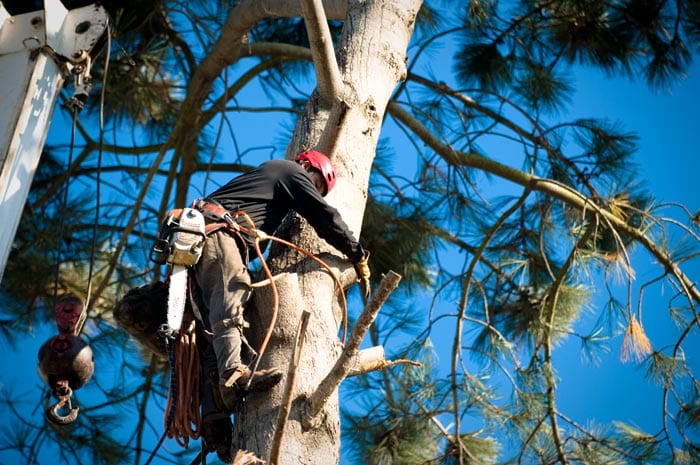
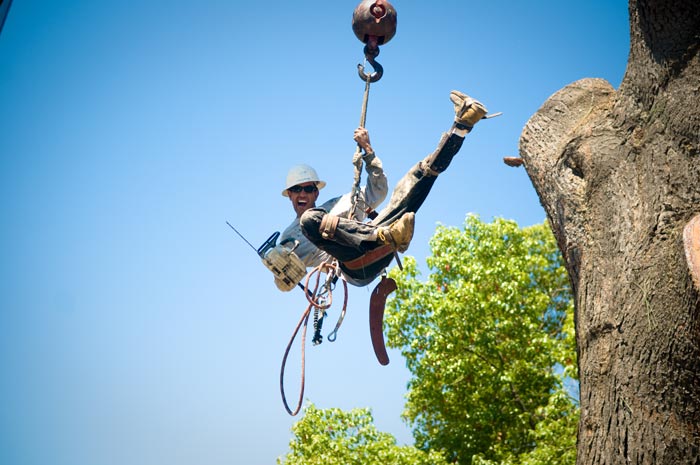
Do tree trimmers have a fear of heights?
When asked about a fear of heights, CEO, Larry Coalson, describes himself not NOT having a fear of heights, but rather a HEALTHY fear. Sitting 40 feet up in a tree doesn’t bother him the way it would your typical person. Even sitting at the edge of a cliff with a 200-ft drop doesn’t paralyze him with fear—unlike other people who get dizzy just thinking about it. Larry, on the other hand, views sitting on the edge of a cliff like sitting on a 10-ft wall. If you sit properly, your chances of falling are unlikely. BUT if you’re acting foolish, dancing along the edge, or just being plain dumb, then yes, you just might fall off!
Tree trimmers trust to some degree the trees that they climb onto. It doesn’t mean, however, that they trust all trees. Some trees can be too hazardous to climb, such as ones that are dead or rotting. Other trees could be too skinny and frail to give even a 50-lb child any sense of security, let alone a 180-lb man with a heavy chainsaw. This is why proper training and experience play a crucial role in keeping a tree trimmer safe, as well as the entire field crew and the property that the job is being performed at.
In San Diego, a couple of local trees that can make a grown man sweat with uncertainty are the lemon-scented eucalyptus and any tall Mexican fan palm whose crown is beyond the reach of a boom lift, so it therefore has to be climbed all the way to the top. Both of these trees (although technically, the fan palm isn’t a tree) grow tall and lanky—even known to soar past 100 feet in height. And not only are they tall, but they’re skinny and flexible. Bad combination for a tree trimmer, who couldn’t care less about swaying back and forth 60 feet up in the air on a tree trunk with a diameter of less than a foot. His only hope is that he’s not too heavy to cause it to snap.
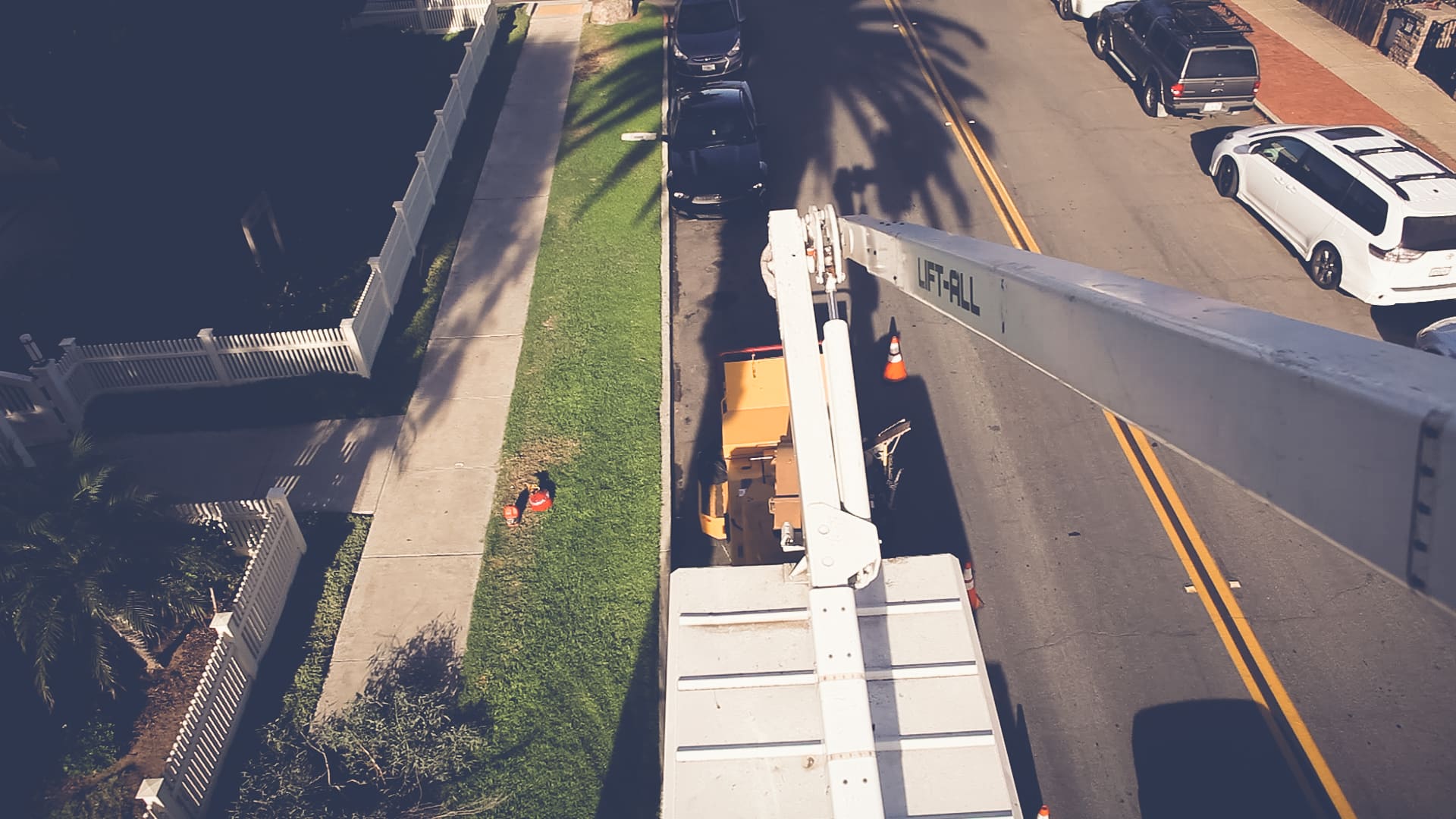
It’s a dangerous job—but someone has to do it!
Almost every tree trimmer goes through some degree of fear on the job—whether it be a minor uneasiness or a serious “I’m about to die!” terror. Practically every aspect of the job can be dangerous on a daily basis. Falling tree parts. Even worse…unexpected falling trees. Hazardous working heights. Dangerous chainsaws. Deadly chippers. Stabbing spikes that go right through the sole of a boot. Stinging bee armies. Electrical lines. And that’s just the tip of the iceberg.
According to the Bureau of Labor Statistics, the tree industry tops the nation’s list of the most dangerous jobs, with falling tree parts and equipment operation injuries being the main culprits for injuries and fatalities. It’s a dangerous job, but someone has to do it! But why would anyone want to put themselves at such risk on a daily basis? While Larry Coalson may not climb trees much anymore, back when he did climb for a living, he loved the daily adrenaline rush. The thought of sitting at a desk all day long made him cringe, but the thought of scaling up a tree for a living gave him a deep sense of excitement. The smell of the outdoors. The array of lurking dangers. The dangling heights that most people never get to experience. It all added to the love of his job—as dangerous as it was.
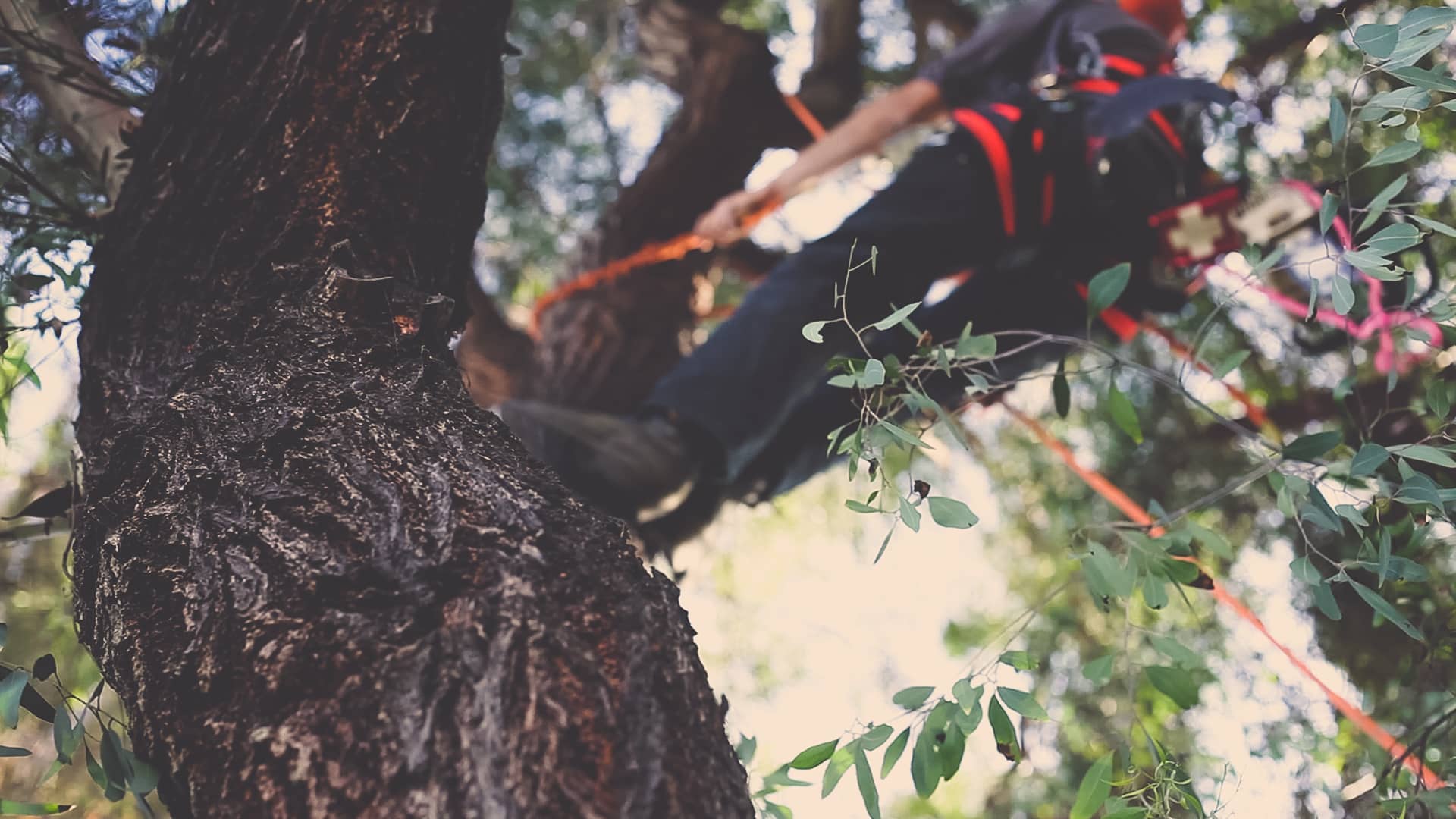
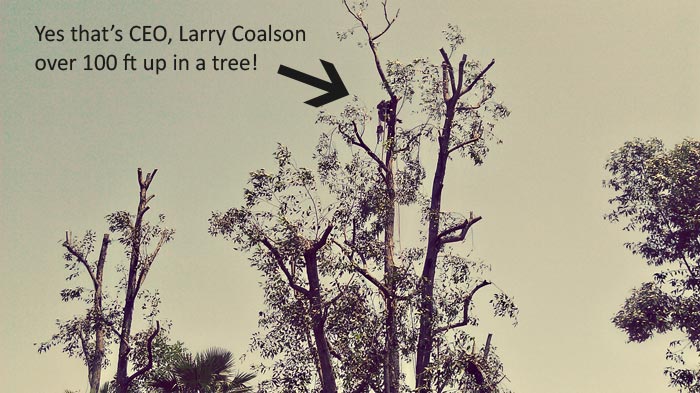
The post SOARING HEIGHTS WITH TREE TRIMMERS first appeared on San Diego Tree Trimmers – LC Tree Service.
IS YOUR TREE INFECTED OR INFESTED?
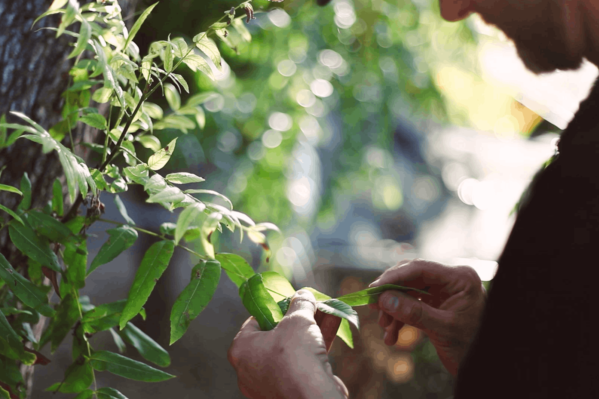
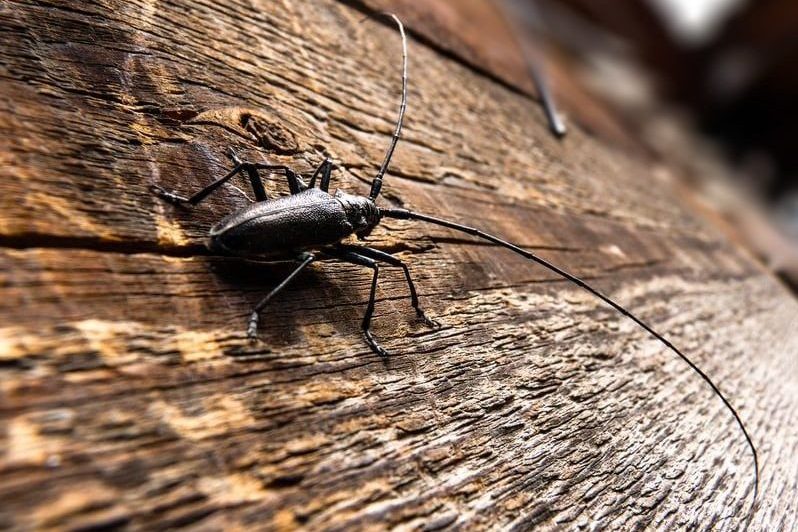
Trees can be a prized addition to any property, especially when they are large, mature, and well-maintained. Most people plant young, smaller trees on their property to save money and simply wait for the tree to grow to an ideal size, since transplanting a mature tree has a hefty price tag! Depending on the size of the tree, it can cost several $100,000. Yikes!
So when your cherished investment that you’ve been watching grow for the past 10 or 20 years starts to show signs of an infection or pest infestation, what should you do? IS there anything you can do to save your tree from further decline? The answer can be “yes” or “no.” The key is early detection. If an invading virus, bacteria, fungus, or pest has penetrated too deeply into the tree’s system, the extensive damage has been done and the only recommendation would be a tree removal. However, if the invaders are caught “red-handed” early on, then controlling, even eradicating them, is much more simple. Thankfully, there are several evident signs that you can look out for.
INFECTION + INFESTATION SIGNS
UNSEASONAL YELLOW OR BROWN FOLIAGE
When a tree is struggling with sickness or infestation, one of first signs that a property owner will notice is the change in the tree’s leaves. Nutrients are being robbed or nutrient absorption is hindered by the damage that is inflicted by the invaders. As a result, the tree’s foliage starts to die back and lose its color. This can be a tricky indicator source for an untrained eye, however, during the fall and winter months, since that is the time of the year when the leaves from deciduous trees naturally die off. Occasionally, we’ve received an inquiry from someone wanting their “dying” tree removed for safety concerns—when really it was winter, and the tree was simply doing what trees do in the winter. When deciduous trees start to go into hibernation, the discoloration in their foliage tends to spread throughout the entire canopy fairly quickly compared to that of an infested or infected tree. You should also note that evergreen trees shouldn’t have patches of browning foliage, as they are meant to stay green all year round. Therefore, using this indicator for evergreens, like pine trees, is more clear-cut than it would be for deciduous trees.

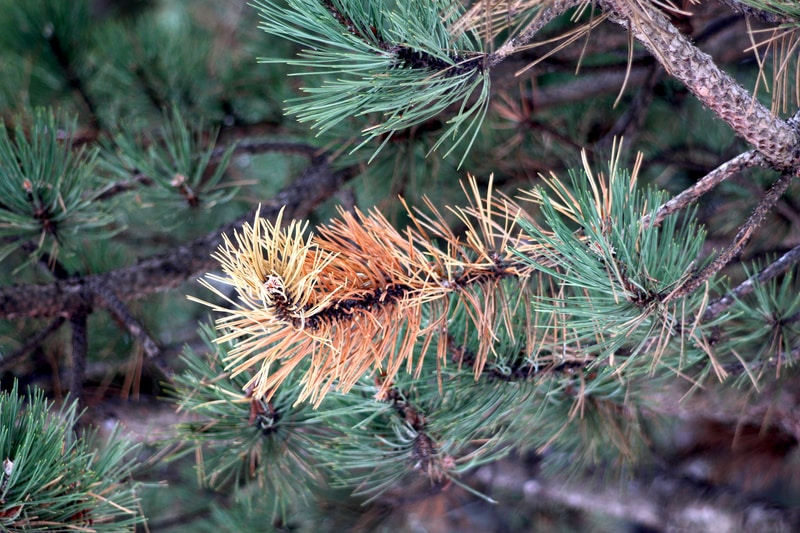
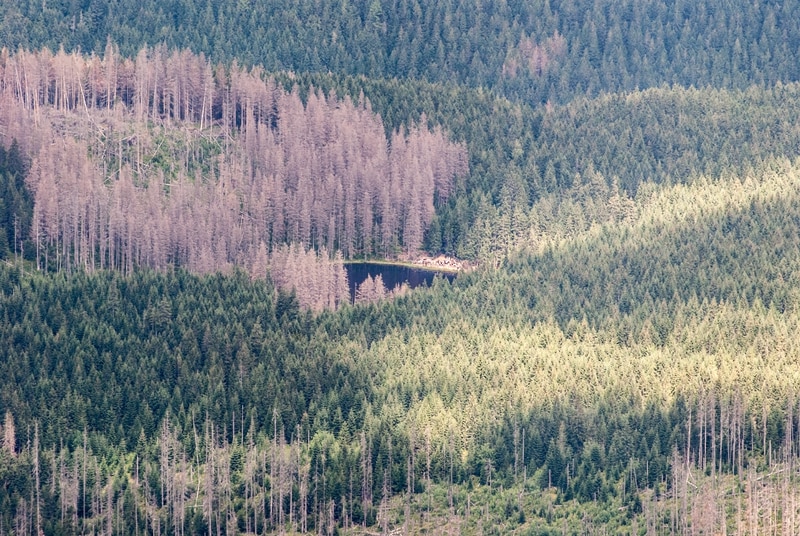
LEAKING TREE
Leakage from a tree is indicative of an injury, which could be a non-issue or a big issue. Anytime a tree loses a limb from a trimming or natural causes, it sustains an injury, which can cause it to bleed or leak sap. Typically, a tree will seal up its injuries—the same way our bodies heal up cuts. However, unlike the human body, trees do not heal—they seal. They do not repair the injury from the inside out, but instead compartmentalize the wound and form new callus tissue around and over the injury.
WETWOOD, or slime flux is a very common bacterial infection found in many trees. Oftentimes it can be found at the crotch of tree due to cracks in the wood or at a pruning site. But sometimes it be found just about anywhere on a tree. The bacteria makes its way into the heartwood and sapwood, typically through root injury. It, then, does its little thing, causing gas buildup. This increase in pressure pushes the sap out through any little crack or weak spot on the tree’s outer layers. Unfortunately, there are no known treatments for slime flux. But thankfully, it’s an infection that isn’t a big deal. Occasionally, it can have detrimental effects on an unhealthy tree—but for the majority of affected trees, it’s harmless.
BORING BEETLES are to blame for many sap leaks found in trees, especially in San Diego’s oaks and pines. Any tree that already has leaking sap is an easy target for these invaders, because it signals an easy entrance in, and it could also indicate that the tree has a weaker defense system. If beetles don’t enter through an already-existing wound, then they’ll eat their way through the bark to make a new home for their upcoming brood of cute little larva babies. Once the larvae are fully mature, they bore their way all the way out of the tree, leaving behind exit wounds or D-shaped holes. If the infestation is new, then the exist wounds may leak sap, which is still a good sign that the tree is still vivacious enough to try to defend itself. However, if a tree contains a number of dry holes that aren’t leaking, then it’s an unfortunate sign that the tree has been under attack for quite some time. The key to avoiding a beetle infestation from killing your tree is early detection. Spot a few holes, your tree may be okay. Spot more than a dozen, then contact LC Tree Service immediately for a consultation and possible treatment plan.
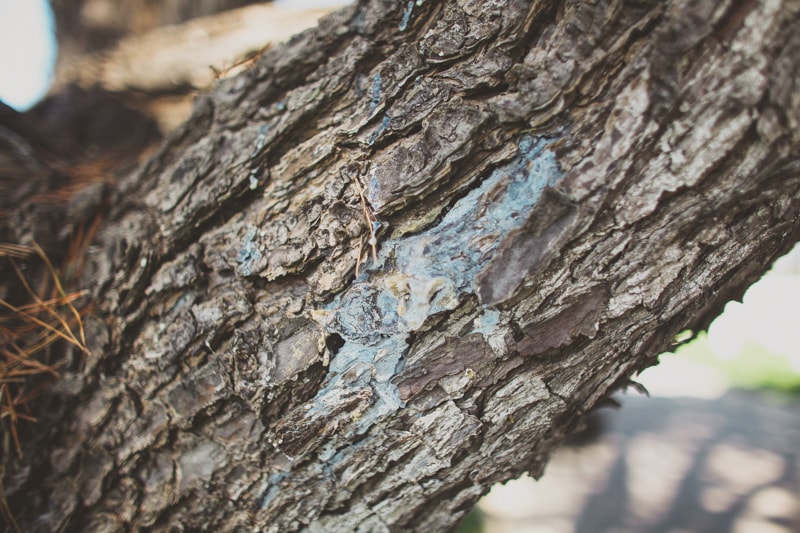
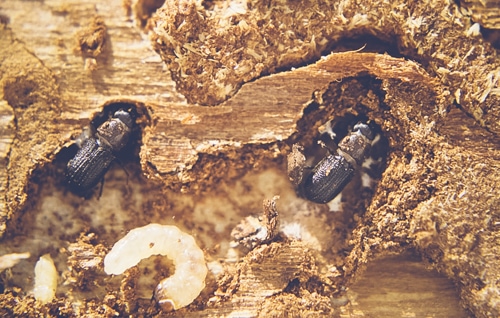
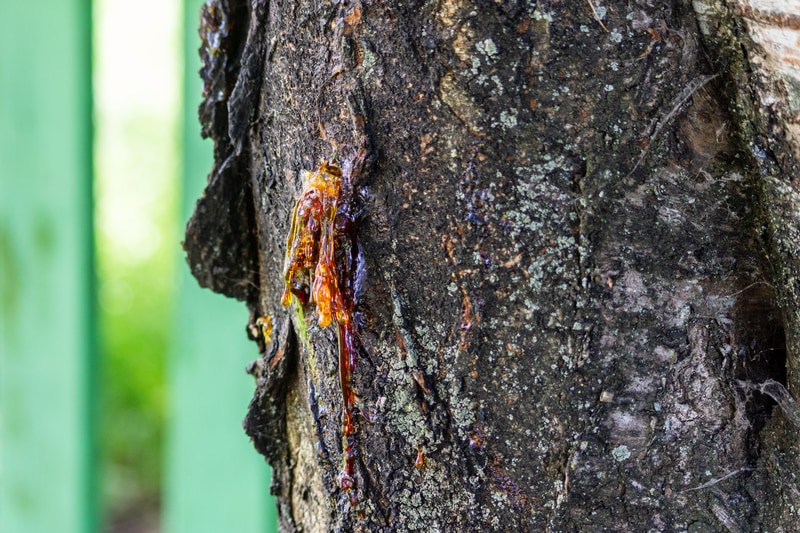
CONKS OR MUSHROOMS
Mushrooms on a plate of spaghetti—a great addition! Mushrooms at the base of a tree trunk—BAD!
Mushrooms, or conks, are the fruiting body of a fungus. While not all mushrooms are equally damaging to a tree, most are an external sign that something detrimental has already been going on internally or underground within the tree’s roots. Some fungi go directly for the roots, while others enter the tree through exterior wounds on the trunk or limbs that are caused by any number of sources, including tree trimming, cracks in the bark, blades from a lawnmower, or any other means of damage. Then the real impairment begins as the fungus releases an enzyme that breaks down the tree’s tissue to begin eating away at a seemingly unending source of food.
If the tree’s roots and/or base have been under fungal attack, then it makes the tree a likely candidate for breaking and falling—or what is known as tree failure. While fungicide treatments can slow down the spread of the fungus, in most cases where mushrooms are present (especially at the base), the tree is beyond repair due to the extensive internal damage that has already been done. If the foundation of the tree has been compromised, then unfortunately, the safest measure would be a tree removal.

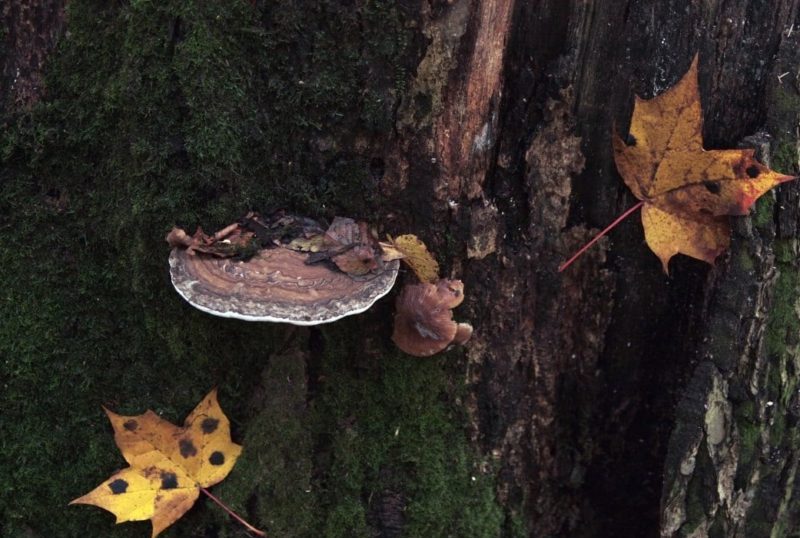
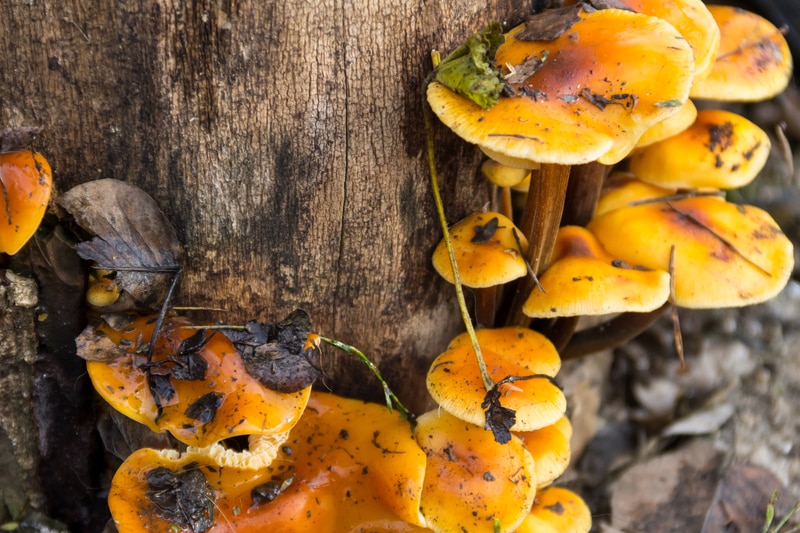
POWDERY MILDEW
If you notice a white powdery substance on your tree’s leaves, have no fear—it is a common fungal disease that is easy to remedy. The powder is the result of airborne fungal spores that spread with the wind to look for new trees to inflict. When a tree has been infected, white to grey fuzzy blotches appear not only on the leaves, but also on the stems and buds. This is a tree infection that is unavoidable in many parts of the world and can strike almost any tree. However, the most preferred tree species include oaks, dogwood, magnolia, maple, azaleas, lilacs, and crape myrtle.
The fungus thrives in humidity and in temperatures above 60 degrees—although it can still be found in arid climates as well. In the winter, it lies dormant, and it is awakened by the warmer spring temperatures. Growing season! New spores are produced in the dampness of the night, which are then carried off during the day by the wind. This process continues as long as the humidity levels and temperatures are high enough.
While the fungi that cause powdery mildew are hard to avoid, there are steps that you can take to prevent your trees from being infected.
- Plant trees in areas with plenty of sunshine to aide in keeping its foliage dry.
- Avoid wetting the foliage in the late afternoon.
- Keep trees well-trimmed to help increase air circulation and light penetration.
- Plant trees with plenty of space in between trees to help avoid cross-infection.
- If planting a new tree, consider a less-susceptible tree species.
Fortunately, this fungus is one that can be controlled with proper fungicide. Please contact us, if you notice leaf powder on your trees to avoid spread and leaf distortion.
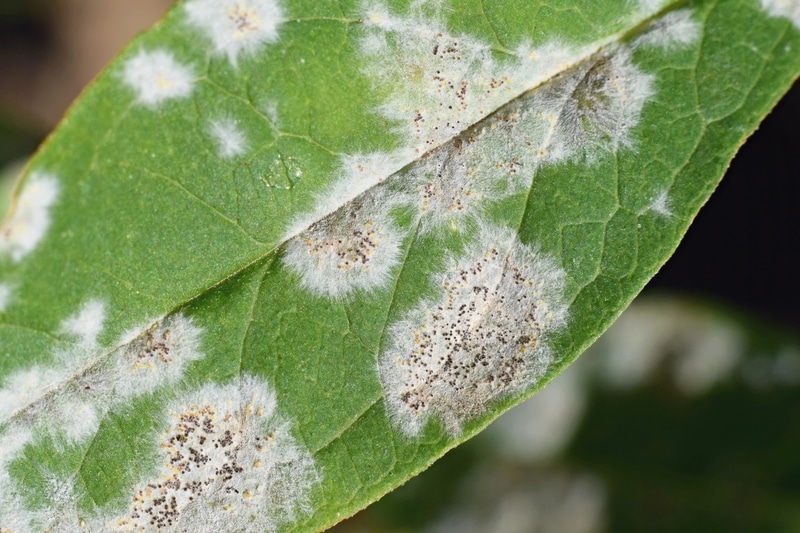
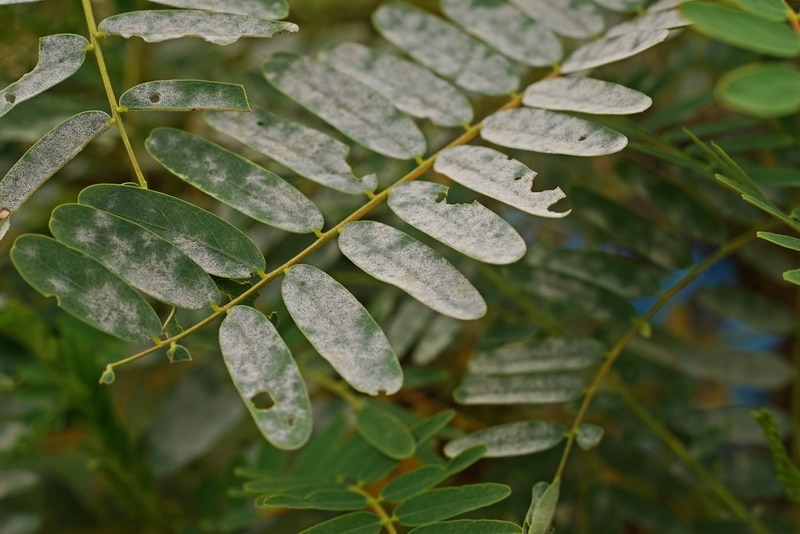

LOOSE BARK
All trees shed off their bark and crack to some degree. It’s simply their natural process of growing out of their skin. It could even just be the tree suffering from extreme elements, such as frost or extreme heat—in which some tender love and care to bring them back to a healthy state.
Some trees shed more than others, like the melaleuca tree that is so common to see in San Diego. This is a local tree that is ALWAYS shedding off its bark in a unique fashion that looks like paper peeling off, hence giving it its nickname—the paperbark tree. The various eucalyptus trees around the city are also notorious for molting. However, if a hardwood tree such as a pine has loose bark that comes off with a slight tug, then there is an underlying issue that should be inspected by a tree professional.
To better decipher whether your tree is going through its normal exfoliation process, look to see if there is a layer of fresh bark behind the shedding layer. If so, then that is a good sign that your is simply shedding. But if you see bare wood that has a fuzzy fungus or lighter-colered wiggly lines, then you have an issue. Your tree is suffering from either a fungal infection or a beetle infestation.
DISEASE. A common culprit for peeling bark on trees is a fungal disease called Hypoxylon canker. Its most popular victim is the oak tree, although different
Hypoxylon species will affect different host trees of choice. Being a fungus, it spreads through aerial spores, but will only cause harm to weak and stressed trees that are easy prey. Healthy trees typically have no issue defending themselves against Hypoxylon. In fact, many healthy trees already have the fungus on their outer bark, but they won’t be affected unless their natural defense mechanisms are compromised by factors such as malnutrition, drought, heat, insect attacks, etc.
Unfortunately, there is no known cure for Hypoxylon canker. Because the fungus lives in the interior of a tree, once the infection become evident from the outside, the irreversible damage has already been done. The typical protocol would be a removal of infected limbs or removal of the entire tree, especially if the fungus has affected the trunk.
BEETLE INFESTATIONS are a common cause for loose bark, especially with the pines in San Diego. The beetles feed mainly on the tree’s sapwood located just beneath the bark. This eventually causes the bark to loosen up and fall. Boring holes in the trunk are a tell-tale sign that the tree is infected with beetles, but for curiosity’s sake, if you wish to see their burrows, you can try peeling off a section of the bark—which will uncover a chaotic mess of the beetles’ burrowing lines. Take note though that if you are able to peel off the bark that easily, then the tree is beyond saving.
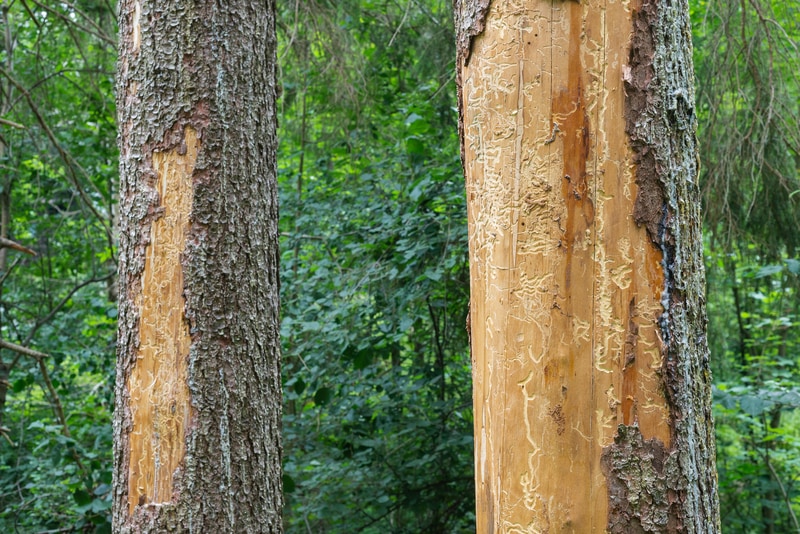
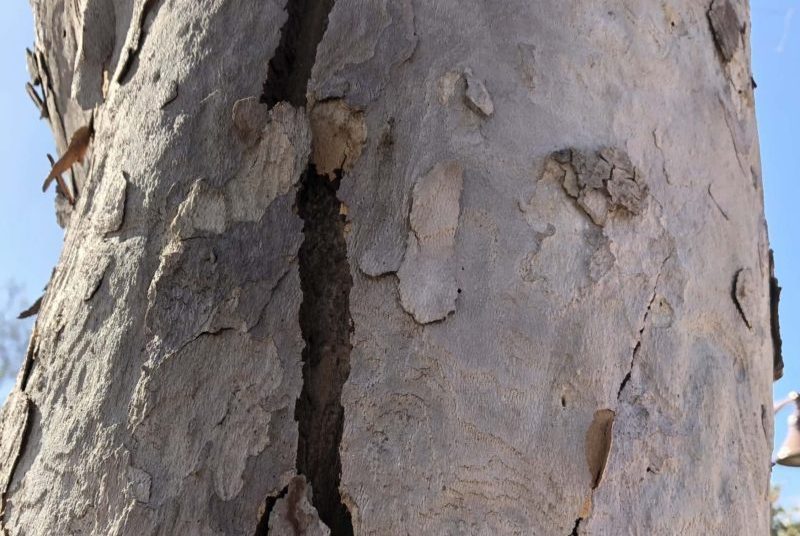
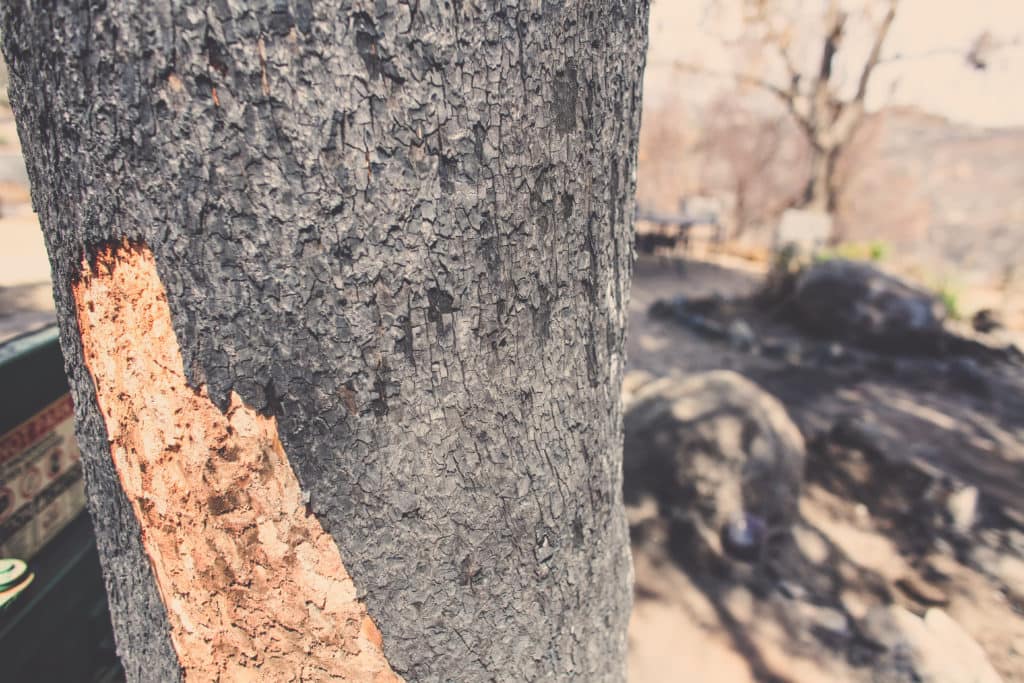
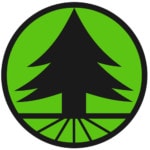
IF YOU HAVE AN INFESTED OR INFECTED TREE,
PLEASE CONTACT LC TREE SERVICE IMMEDIATELY
SERVING ALL OF SAN DIEGO COUNTY
The post IS YOUR TREE INFECTED OR INFESTED? first appeared on San Diego Tree Trimmers – LC Tree Service.
EMERGENCY TREE REMOVAL IN SAN DIEGO
Rain and wind in San Diego! It’s that time of the year when the residents of San Diego either get excited about finally getting a change in the weather or they find it distressing that their “perfect” sunny weather is getting disrupted. San Diego’s storm season typically occurs during the cooler months of December through March. While our storms are mild and cannot compare to the blizzards, tornadoes, hurricanes, and tumultuous lightning storms that take place throughout much of the country, our winter weather is still capable of causing its share of damage.
Unfortunately when the rain and winds push through San Diego, it is common to see trees topple on top of homes and other structures and our city roads. It doesn’t even take much for trees to start falling around our county. Depending on the tree and its circumstances, sometimes a slight gust will give it just the right push to expose its weakness. While some arborists disagree over whether some species are more prone to failure than others, the fact is that any tree has the potential to fall without any prior indication — even seemingly healthy trees.
The leading reason for tree failure lies in the combination of the tree’s weight and root structure. The denser the canopy of the tree and/or the larger and heavier the trunk, then the more weight the roots are required to support. The roots play a vital role in anchoring a tree, and when they are compromised by variables such as urban development, fungus, disease, and age, then a massive 70-ft tree per se will end up being more sensitive to the power of the wind.
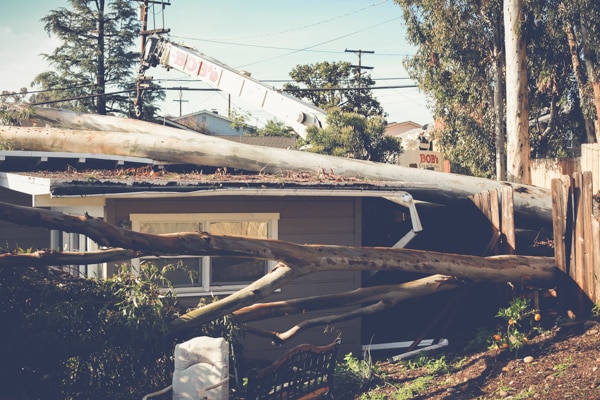
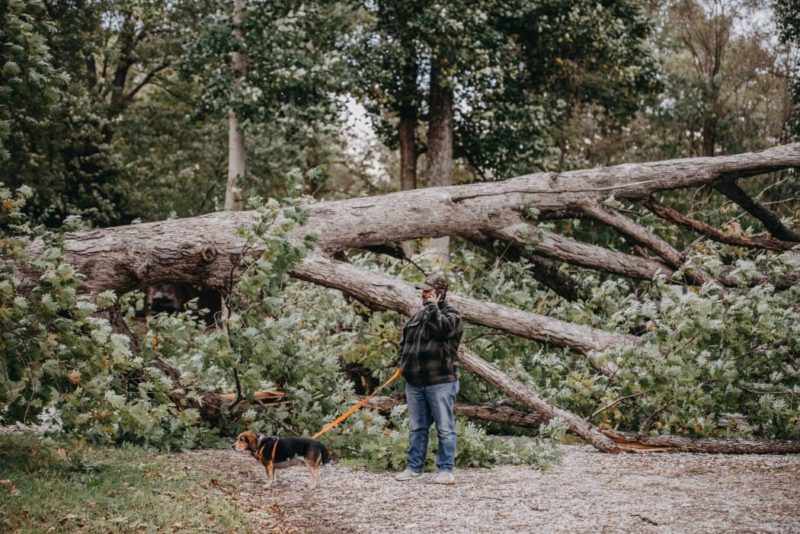
WHAT TO DO IN A TREE FAILURE EMERGENCY?
If you are an unfortunate property owner with an unexpected fallen tree, the first step you should make is to ensure that everyone in the house or building is safe and take immediate medical action if any injuries were incurred. If the breakage poses any harm, such as broken glass or broken electrical wiring, then everyone should keep their distance or evacuate until the damage is inspected by trained professionals.
Once necessary medical attention is taken, then the next step is to either contact your insurance company or LC Tree Service to have a professional come assess the situation. We are available for emergency tree removals at all hours of the day or night. We even welcome you to contact other tree service companies, just to ensure that your property is taken care of as soon as possible and that you receive the best quote and service in such a dire situation.
CHOOSING AN EMERGENCY TREE SERVICE COMPANY
It is important to call a reputable company that has experience in emergency situations and in dealing with insurance companies. Hiring a licensed and insured tree company is a necessity, since emergency tree removals tend to be more hazardous than typical tree removals. Let’s face it — most tree projects don’t require safely cutting and discarding the trunk of a massive tree that has crashed through a roof and is currently hanging out in someone’s living room. Different protocols need to be undertaken, which experienced tree companies know and can execute as safely as possible.
In an emergency tree situation, never choose a tree service company that requires an upfront payment. These types of tree removals can be extremely difficult. And shamefully, it is not unheard of for a tree contractor to give up and walk away from a job. You shouldn’t be required to pay for the job until it is completed. That way you can trust that even when the job gets tough, your tree trimmers will press on and do what it takes to get the job done.
Emergency tree removals tend to be more expensive than other tree projects. This is due to multiple reasons. Emergencies require quick and immediate action, so scheduled jobs need to be moved around in order to accommodate a more pressing job. Occasionally, tree emergency calls come in the middle of the night, and depending the the urgency of the situation, we may come out to assess the scene immediately. Then if the removal needs prompt action, our removal crew will reassemble during the night hours, if necessary, to start the job. Otherwise, jobs that have high-alert status will be performed at the very start of the day. Another factor that leads to higher pricing involves the more hazardous nature of the project. The higher the risk, the higher the cost. Certain scenarios also require the use of heavy machinery, such as cranes, which adds the to the final quote of the job.
SHOULD YOU GO WITH THE LOWEST BID?
People tend to act quickly during emergency tree situations. Most tend to hire the first tree trimmer that they make contact with, while some gather multiple bids and go with the lowest bidder. However, the lowest bid may not necessarily be the best bid. It is helpful to do some background research on the tree company and ask questions. While it doesn’t pertain to all, some tree service companies are able to charge lower rates because of the lack of proper insurance and worker’s compensation. Others may the lack emergency tree experience, therefore resulting in an underbid. In this scenario, they may either raise the quote in the middle of the project or just take a loss on the job (hashtag learning lesson).
Instead, we encourage you to go with the company that you trust the most to perform the job properly and professionally — one that is licensed, insured, experienced, and recommended by others. Sometimes that may be the lowest bidder. But sometimes — hopefully not — it may be the highest. While our emergency tree removals are higher priced, LC Tree Service likes to stay on the competitive, yet reasonable, edge with our rates.
EMERGENCY TREE REMOVAL FROM THE ROOF OF A HOME IN SAN DIEGO
DEALING WITH YOUR INSURANCE COMPANY
Contacting your insurance company is one the first steps you should make. Most recommend that you contact them first, but in many of our emergency jobs, our customers chose to contact a tree company first. We would imagine that removing an unwelcome tree guest out of their home would be first on someone’s mind before the need for placing an insurance claim. Either way, whether you choose to call a tree service company first or your insurance company, it needs to be done immediately. It is important to know what your insurance will cover and what their policy is regarding vendor payments. You will need to know whether your insurance covers both the removal of the tree from structures and the ground or if it only covers removal from structures. Then depending on your policy, payment will either be handled 1)directly from the consumer to vendor, 2)from the insurance company to consumer to vendor, or 3)directly to the vendor from the insurance company.
WHAT IF A TREE FALLS ON YOUR NEIGHBOR’S PROPERTY?
If your tree falls on your neighbor’s property, or vice-versa — your neighbor’s tree falls on your property, the same steps should be taken. Both parties’ insurance companies need to be contacted and a tree service company needs to be contacted either by you or your neighbor. Each homeowner’s insurance will cover the damage caused to their client’s property. Then the neighbor’s insurance company (if your tree fell on their property) will later file a subrogation claim with your insurance company to recoup the cost caused by your tree failure.
HELPING TO PREVENT TREE FAILURE
It is important to keep your tree trimmed on a regular basis (every 1-2 years contingent on the species). Unmaintained trees with a dense canopy have more surface area for wind push. However, certain species, like the Ficus benjamina, usually possess dense canopies — but by nature, they also grow some of the sturdiest roots in San Diego. Therefore in most cases, you would be okay having a dense ficus in your backyard, as long as it has sufficient growing room for its roots. Other trees, like the eucaplytus, should be monitored regularly when they’re at a mature height and kept well-trimmed, as their roots are more shallow than other species.
If you have a large leaning tree, especially one that is situated on a slope, it is more important to monitor it and maintain a light canopy. Having a leaning trunk with a heavy top only imposes more stress on the roots to keep it upright. Some leaning trees fare just fine, however others with a weaker root system eventually fall under the pressure. So if you have a tree that is leaning towards your home or building, or your neighbor’s property, then to stay on the safe side, it would even be wise to have it removed.
While it is easy to monitor how top-heavy a tree is, analyzing the roots is a bit trickier. Thankfully, there are signs that you can look out for.
- If mushrooms are visible at the base of the trunk or anywhere underneath the tree’s canopy, then this is a sign that fungal growth is rotting away the tree’s roots.
- If your tree is diseased or old and nearing the end of its life cycle, then the entire framework is weakening, including its root system.
- Make sure that your large mature tree has plenty of room for root growth. If it is close to any development (i.e. roads, homes, buildings, pavement) then chances are that its anchoring system is compromised, therefore increasing its chances of failure.
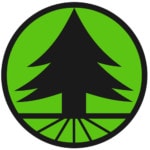
IF YOU NEED AN EMERGENCY TREE REMOVAL,
PLEASE CONTACT US IMMEDIATELY.
The post EMERGENCY TREE REMOVAL IN SAN DIEGO first appeared on San Diego Tree Trimmers – LC Tree Service.
SAN DIEGO’S MOST ANNOYING TREE
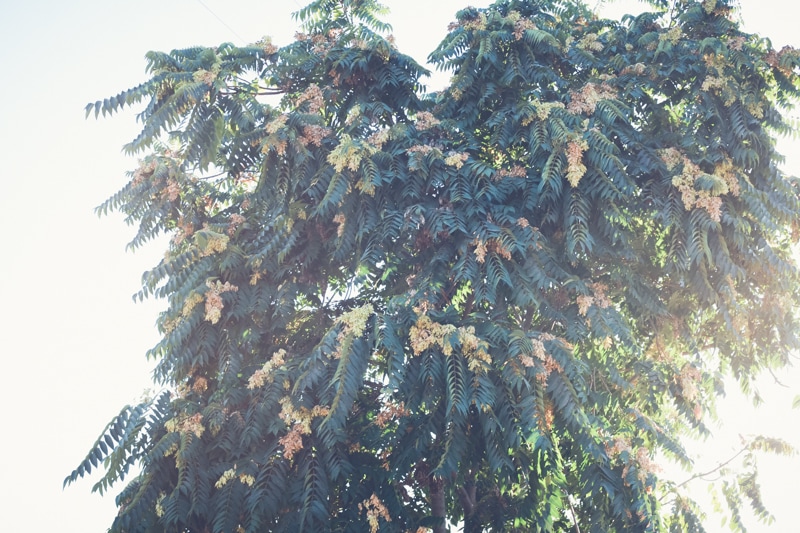


From the desert to the beaches, the mountains to the valleys, San Diego is a diverse city filled with a vast assortment of trees. With our sunny, mild climate, practically any tree can grow here with the proper care. In fact, most of the trees that you see aren’t even native to this region. All those palms — foreigners! Those eucalyptus trees that seem to be along every freeway and in every neighborhood — foreigners! Yes, only a few trees can actually call themselves true San Diego “locals.”
Some foreign trees making great additions to our San Diego terrain, but others are deemed invasive species that are detrimental to the native ecosystem or just plain annoying to people. What exactly is an invasive tree? Invasive plants are defined as “any indigenous or exotic plant species having a detrimental effect on the growth of commercial tree species, giving rise to particular management problems or growing where it is not wanted.” (Le Roux, 1981) So basically, it’s a foreign plant (which trees are considered to be plants) that people, as well as the natural indigenous ecosystem, have issues with.
Quite a few trees in San Diego are classified as invasive species, but some aren’t as bad as others. Many people wouldn’t even think about them being invasive, like the Canary Island date palm. This is a high-class invasive plant that is commonly added to landscape and can cost thousands of dollars. But some invasive trees aren’t as dignified as the date palm. In fact, there are areas of the world where they are strictly prohibited and required to be controlled or destroyed. So in our city, what unfortunate tree tops LC Tree Service’s list of San Diego’s Most Annoying Tree?
TREE-OF-HEAVEN
Ailanthus altissima

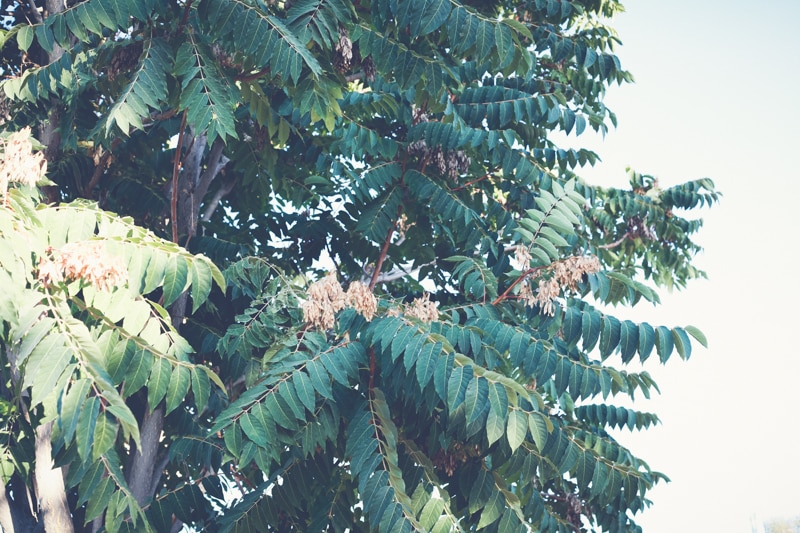
The tree-of-heaven! It has the most divine name, but don’t be fooled — it’s no angel. Originating from Asia, the tree-of-heaven is also known as Ailanthus altissima, or ailanthus for short. In urban areas where it be found growing in sidewalk cracks or along buildings, it has been dubbed the ghetto palm. Some may even call it the more appropriate name — the tree-from-hell. This is a tree that is notorious for evoking anger in any property owner who has even the most minute concern for their landscape. It’s a tree whose name you search on the internet, only to find an exhaustive list of negative articles that go on and on about how bad this tree is.
Why would one tree receive so much hate? The tree-of-heaven is practically a weed in tree form! Like a weed, you don’t need to plant them, they just pop up. And they keep popping up and taking over — unless proper protocol is taken. This tree species truly embraces the characteristics of an invasive plant. It spreads easily, grows quickly, pushes out the already existing plants, and is one of the hardest trees in San Diego to control. If left to unmanaged, it can quickly end up creating a widespread thicket that trumps over all other vegetation, thanks to its vigorous reproductive nature and toxic nature that inhibits the growth of other plants in its surroundings — sort of like the neighborhood tree bully.
At first glance, a mature tree-of-heaven, when manicured, can actually present itself as a good-looking tree that exhibits a tropical feel. It looks very similar to the mimosa silk trees that are as common in Hawaii as eucalyptus trees are in San Diego. It’s easy to envision the tree-of-heaven nestled among a handful of palms and some giant white bird of paradise plants at a beach resort. However, that would never happen because 1) we have never met anyone who intentionally planted a tree-of-heaven on their property and 2) no high-end resort or property would ever want this tree as part of their ornate landscape. To find a tree-of-heaven that has actually been trimmed is EXTREMELY rare. Most just end up growing wild and messy. As a tree service company, we typically find the tree-of-heaven growing in industrial or commercial properties where meticulous landscaping isn’t exactly high on the priority list. It is also common to see them on residential properties where an unfortunate homeowner thought they were bestowed with a free tree that sprouted up out of nowhere. So they let them grow, only to continue seeing more and more little trees spring up within a couple of years.
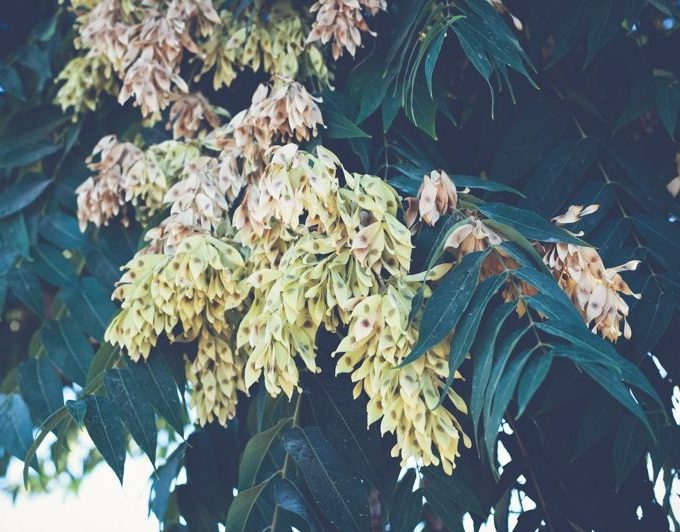

Tree-of-heaven cluster growing in a commercial property
Identification
The tree-of-heaven grows tall with a widespread, draping canopy of dark green leaves and pale brownish-pink clusters of what looks like flowers, but are winged seeds. It is similar in appearance to a few common ornamental trees in San Diego that also have the same pinnately compound leaf structure, such as the black walnut tree and Tipuana tipu. But there is an easy way to discern if it indeed is the tree-of-heaven. This is a tree that loves family! It is typically found in family clusters or colonies where there is a full-sized mother tree with her little baby trees in close proximity — and in systematic line, nonetheless. Sometimes a young tree-of-heaven can be found discreetly nestled among other trees and plants, and sure enough, if you look around, a mature tree can be found just a few houses down the street.
Mature trees can reach heights of 60 to 80 feet and are identifiable by their long pinnately compound leaves that can grow up to 4 feet long. These leaves have a central stem and two rows of 2- to 7-inch dark green pointed leaflets. The leaflets are fairly large with smooth edges, and when crushed, they give off a faint smell that some describe as 1) a mixture of citrus and skunk, 2) burnt rancid peanuts, or even 3) cat urine. If you spot one of these trees and are feeling adventurous, you can give its foliage a sniff, and see what you think. Citrus-y skunk? Burnt peanuts? Or cat urine?
The bark of the tree-of-heaven is light brown to pale grey when mature, and has grey branches that are smooth with raised dots which later mature into fissures. In the warmer months, yellowish-green flower clusters appear. But these flowers aren’t your typical blooms that you would want to add to a pleasant-smelling bouquet. They— just like the leaves — smell horrible!
Reproduction
The tree-of-heaven possesses a prolific nature and a tenacious survival attitude. It has the potential to cast out over 300,000 seeds annually that are brilliantly designed to fly. Each seed is conveniently tucked inside a winged seed pod called a samara that can easily travel long distances with the wind. But even with the millions of tree-of-heaven seeds that get dispersed throughout San Diego each year, they aren’t even necessary for propagation. Established trees also covertly shoot out lateral roots (roots that grow horizontally), which push out new sprouts down the line. That’s why you will typically find tree-of-heaven clusters growing in a straight line. If left unmanaged, these new sprouts rapidly grow into full-size trees with absolutely no human care. And even if the mother tree is cut down, these youngsters can still survive and thrive — even in the middle of a San Diego drought.
Adding to its aggressive reproductive nature, the tree-of-heaven also has the capability of dominating an area by inhibiting the growth of other plants. Present on all parts of the tree, but strongest on the bark and roots, is a toxic allelopathic chemical, called ailanthone, which poisons other neighboring plants or any new seed looking to join the neighborhood. In some studies, ailanthone extracted from the tree-of-heaven was even able to kill 100% of certain plant seedlings. I guess you could describe this species as an introverted passive-aggressive.


Management
While the tree-of-heaven may be surrounded by a plethora of negative attention, its resilience and refusal to go down without a fight is worth applauding. The tree-of-heaven has an amazing capability of survival. Unlike most trees you see around San Diego, if you mess with this tree, it fights back. No, it doesn’t slap you with its branches, but if you cut it or injure it…it knows! And in a survival response, it shoots out dozens of lateral roots underground to help “pass down the family genes.”
If you noticed that you have one of these “bad boys” creeping into your property, what do you do? Have no fear. There are methods to controlling them…which is just a nicer way of saying…annihilating them. Do not attempt to remove it yourself. The only exception would be if it is a brand new sprout that is the first of its kind in the area. If other tree-of-heavens are close by, pulling out a baby sprout would be pointless, because underneath is already an intricate root system that will simply replace what you took out.
The problem with attempting to remove a tree-of-heaven like a “normal” tree lies in the roots. You can take out the mother tree along with the stump, but in a few months, you’ll just see her little saplings lurking through the ground. Pull them out, and then a few months later, what do you know? More mini clones popping out from the ground! For the property owner, it’s a frustrating ordeal.
In order to successfully remove a tree-of-heaven, herbicide must be used to first kill the tree. However, this should be performed by a professional tree service company since a strong herbicide has to be used in order to effectively kill the tree. If other plant species are present, then extra precaution must be taken in order to avoid poisoning neighboring plants. Once the tree has deceased, the removal process can continue as normal.

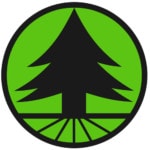
IN NEED OF A TREE-OF-HEAVEN REMOVAL?
Contact LC Tree Service today to set up a free on-site consultation. Serving all of San Diego County.
The post SAN DIEGO’S MOST ANNOYING TREE first appeared on San Diego Tree Trimmers – LC Tree Service.
COST OF TREE REMOVAL SERVICES
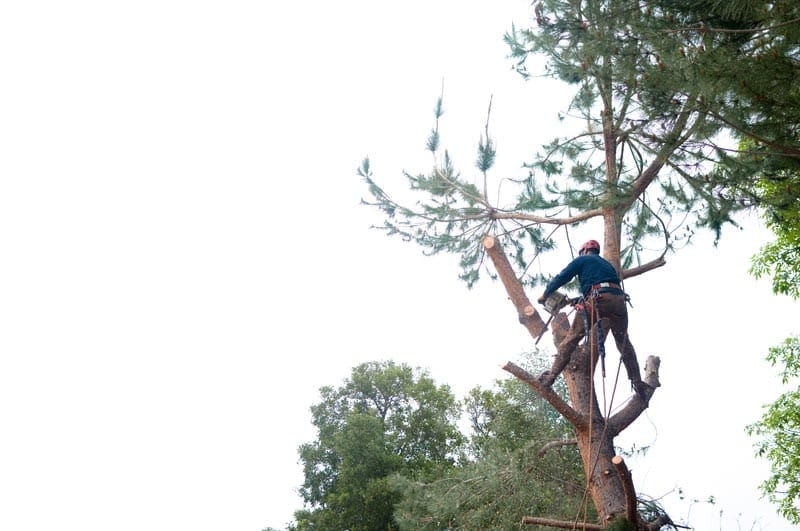
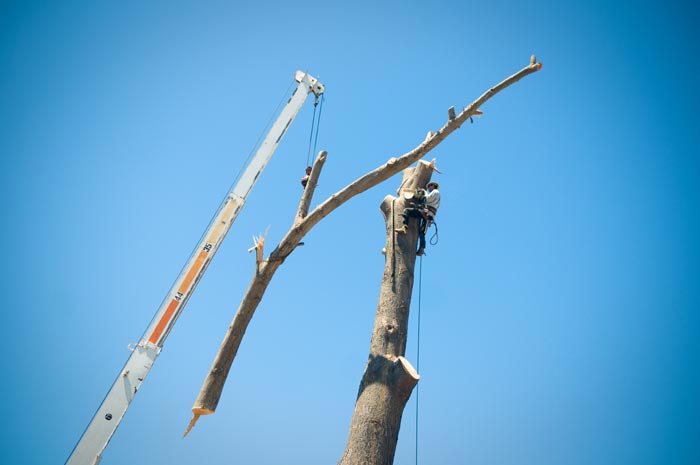
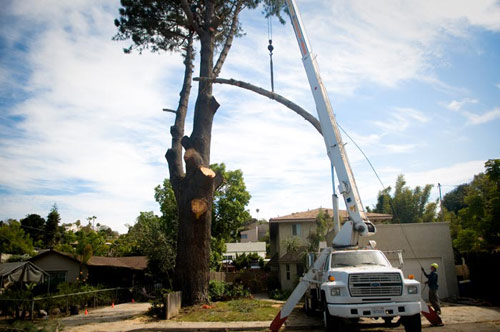
Tree removals vary widely in their size and difficulty. Because no two tree removal jobs are the same, providing a reliable quote without examining the tree and property in person is almost impossible. Too many factors influence the scope of the project, such as canopy density, trunk girth, and carrying distance to the chipper and truck.
While some homeowners may attempt a simple tree trimming, amateur tree removals can quickly go awry when the direction of the fall of limbs or the trunk is miscalculated. Unfortunately these errors can result in property damage or in bodily harm or death, in the most tragic cases. Only small tree removals can be deemed safe to be performed by an amateur, but even those small jobs can easily end up being an all-day Saturday project.
Tree removals jobs are time-consuming and dangerous to both people and properties. However, with proper equipment, our trained and skilled tree crew can remove trees of all sizes as safely as possible. No seasoned tree company can ever boast in never damaging property when performing a tree removal job — because the nature of the job is downright dangerous, more so with larger removals. It involves heavy limbs and trunks suddenly breaking away from their support source, and sometimes crashing to the ground. This is why it is important to hire a professional and licensed tree company with a good reputation and the proper machinery, in order to help alleviate any potential dangers.
WHAT FACTORS INFLUENCE TREE REMOVAL COSTS?
- Canopy density
- Trunk girth
- Tree or palm species
- Proximity of the tree to dump truck and chipper’s location
- Ease or difficulty of the terrain
- Number of trees
- Proximity to structures, fencing, or sensitive landscaping
- Proximity to hazards, such as electrical lines
- Emergency work that requires immediate action, especially during the company’s off-hours
HOW MUCH DO TREE REMOVALS COST?
Provided are price ranges depending on the tree’s height, however, the range is wide due to the preceding factors that influence the final cost.
- 30 ft or less = $100 – $500 per tree
- 30 ft – 60 ft = $200 – $1,500
- Over 60 ft = $1,500 or more per tree

COST EXAMPLES
To give a clearer understanding of what your tree removal can cost, here are some examples of removal jobs that are commonly incurred in Southern California. As with all jobs, the cost can be lower or higher depending on the different factors that determine the ease or difficulty in performing the removal.
- 50 ft Mexican fan palm with little or no dead palm frond skirt = approximately $800
- 50 ft Mexican fan palm with a 15 ft frond skirt = approximately $1,500
- 60 ft Eucalyptus with a base diameter of 24 inches = approximately $1,400
- 50 ft Canary Island pine = approximately $1,200
- 15 ft citrus tree = approximately $400
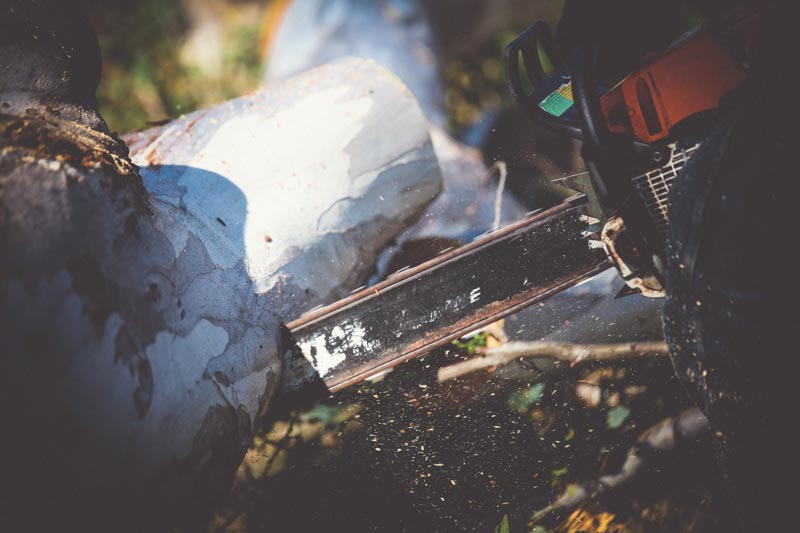
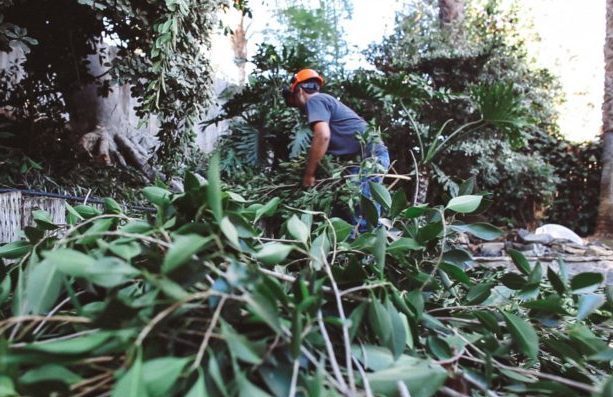
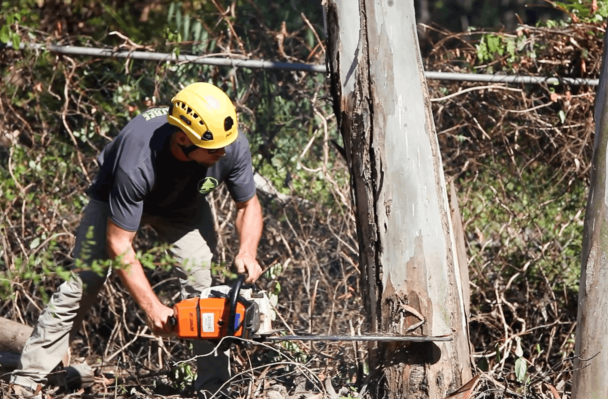
OPTIONAL STUMP REMOVAL
Tree removal jobs involve the removal of everything from the base of the trunk and upwards. On some jobs, the stump and roots are left to save on cost, but in most cases, they are removed to completely finish the project and prevent regrowth. For this reason, we always recommend having the stump removed along with the rest of the tree removal, but tree removals can be costly, so we understand when a client chooses to delay the stump removal for a later date.
As with any tree project, the cost for stump grinding varies greatly from as low as $50 for a simple, small stump to over $1,000 for larger stumps which are located on difficult terrain, such as a steep, hard-to-access slope.
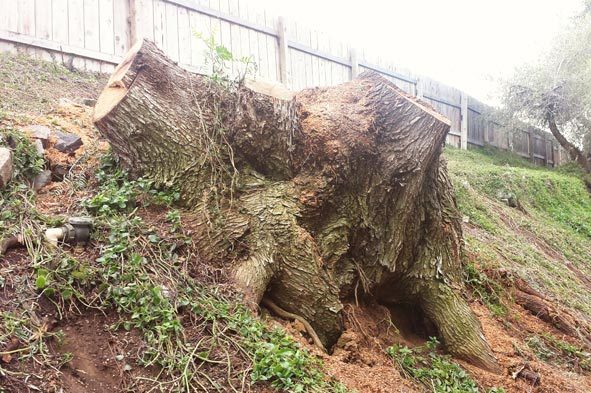
EMERGENCY TREE REMOVAL
Unfortunately, some trees can be very unpredictable. Even the most non-threatening tree can suddenly fall — sometimes resulting in a devastating aftermath. Due the sudden and urgent nature of emergency tree removals, the cost for these jobs tend to be higher than your average tree removal job. Changes need to quickly be made to our company schedule, crews need to be redirected or even regrouped in the middle of the night, and our tree specialists get to work as soon as possible to clear out the fallen trunks and limbs.
The following factors influence the final cost of an emergency tree removal.
- Urgency of the job
- Size of the fallen tree and material
- Odd working hours, such in the middle of the night or holiday
- Difficulty and sensitivity of tree location, such as fallen trees on power lines or through homes



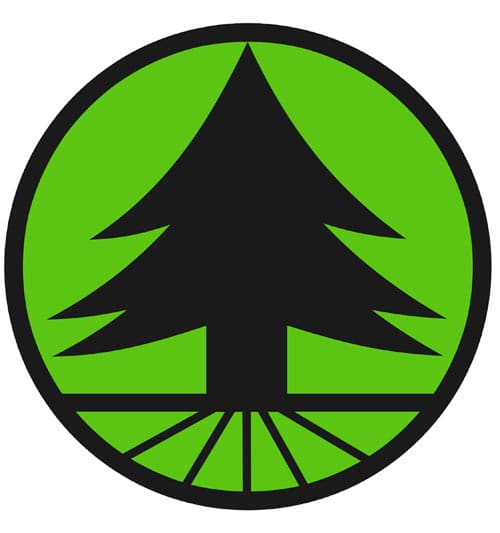
IN NEED OF A TREE REMOVAL?
Contact LC Tree Service today for your free consultation!
The post COST OF TREE REMOVAL SERVICES first appeared on San Diego Tree Trimmers – LC Tree Service.
Did you miss our previous article…
https://www.treesforeducation.com/?p=163
Creating Company Culture – TCIA Podcast Featuring Jeff & Amy Grewe
Did you miss our previous article…
https://www.treesforeducation.com/?p=160
